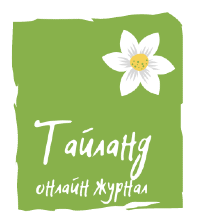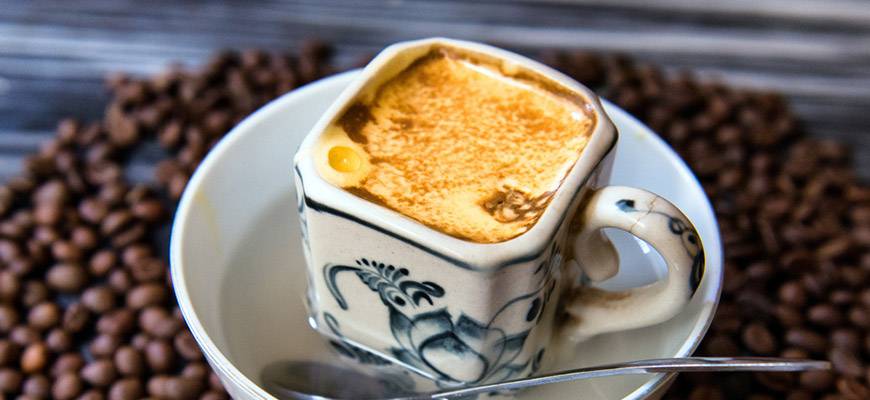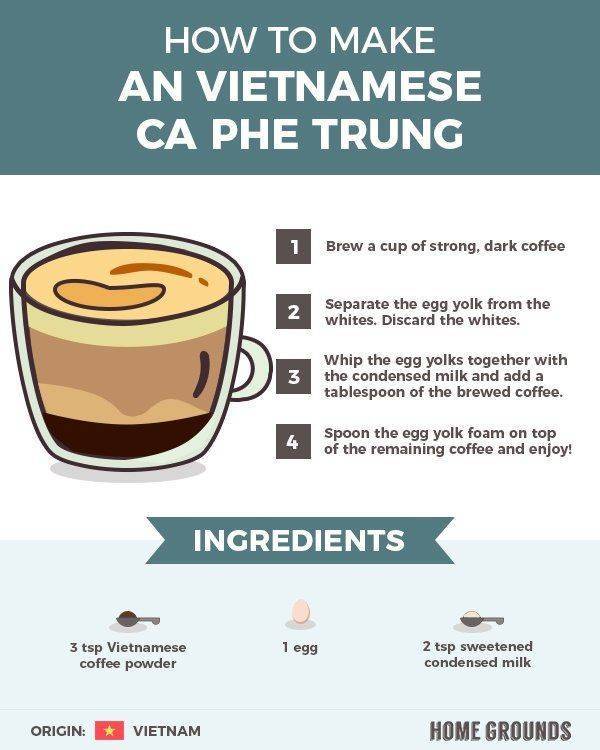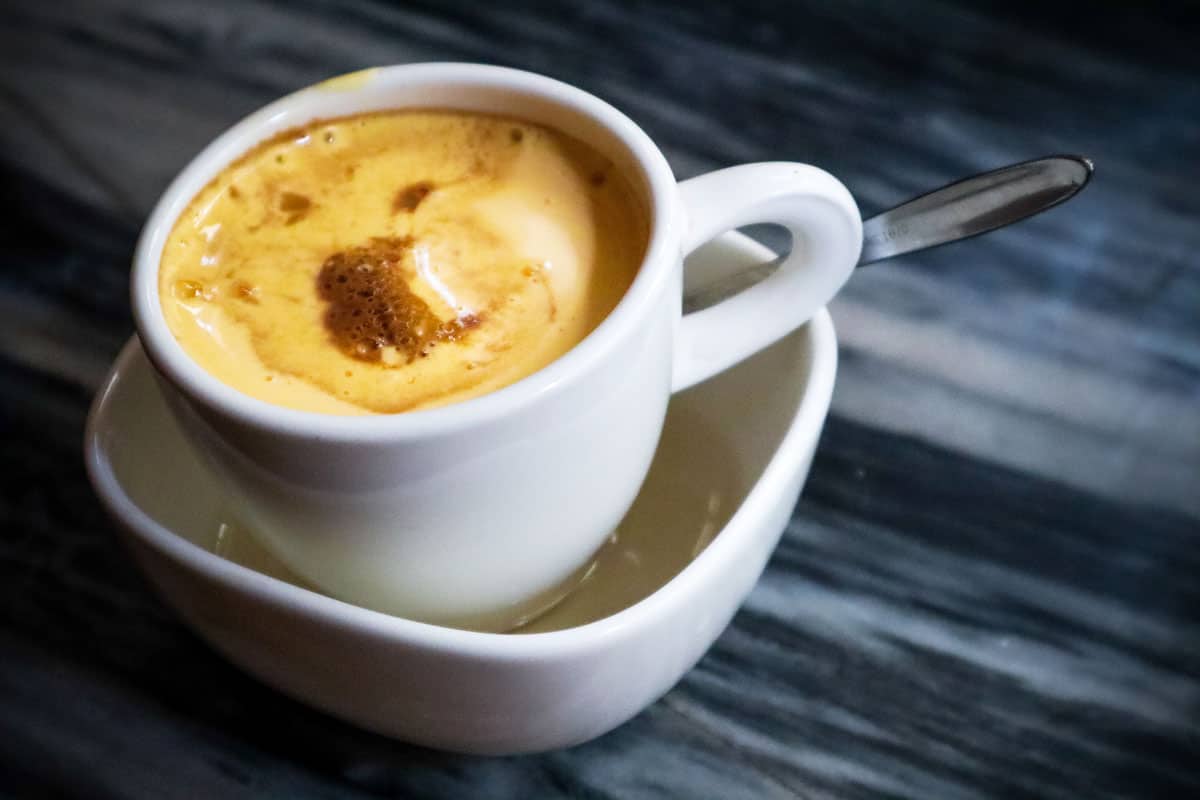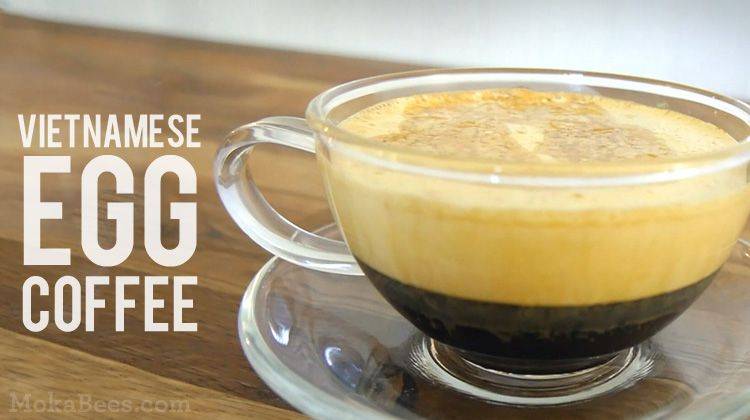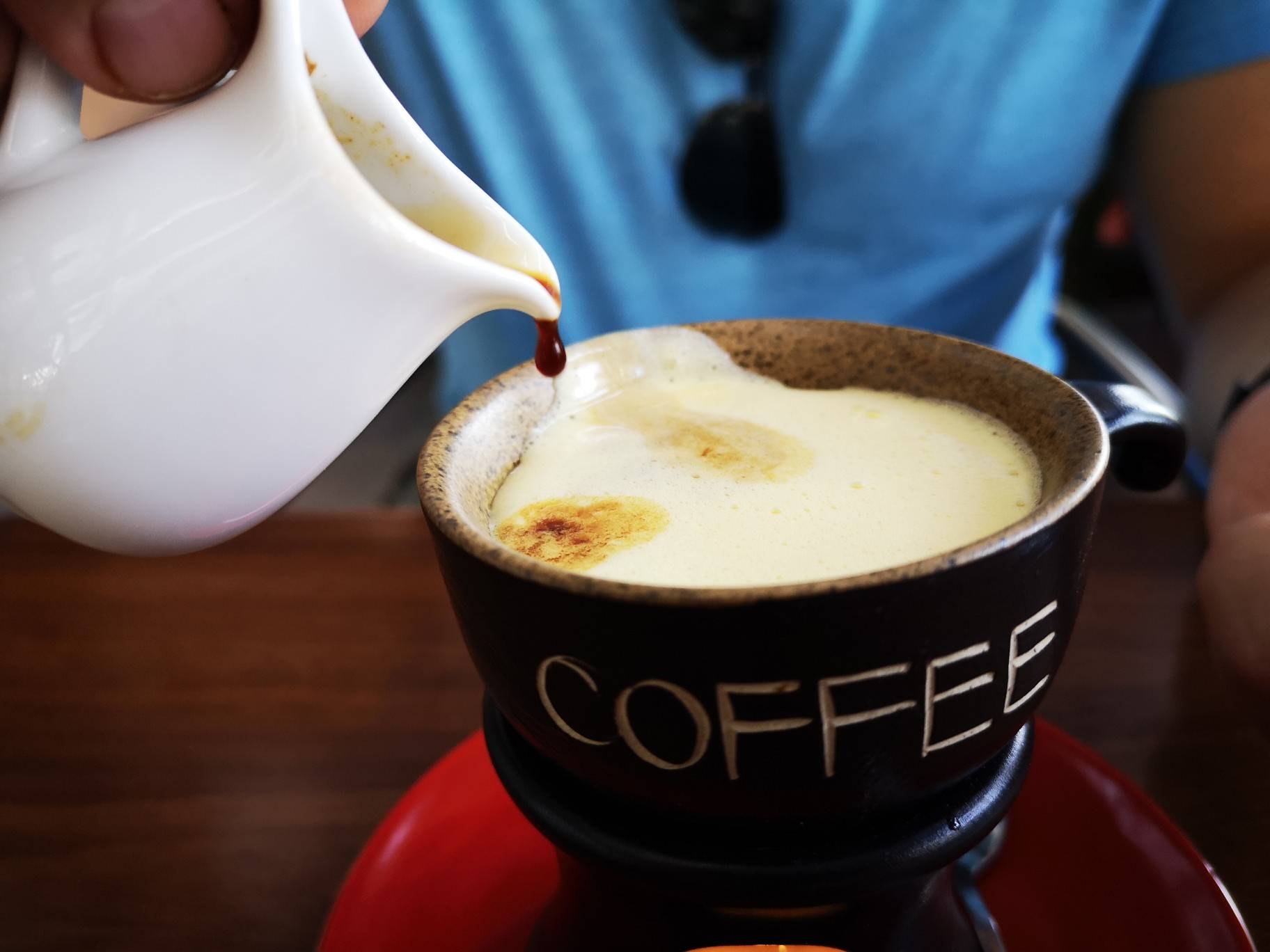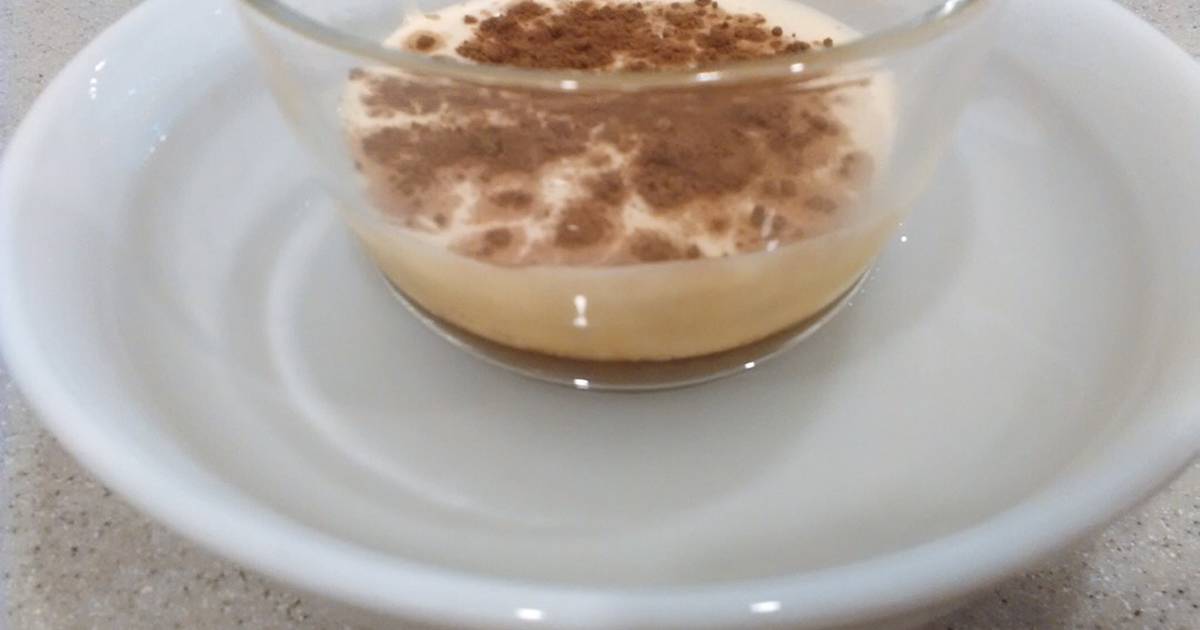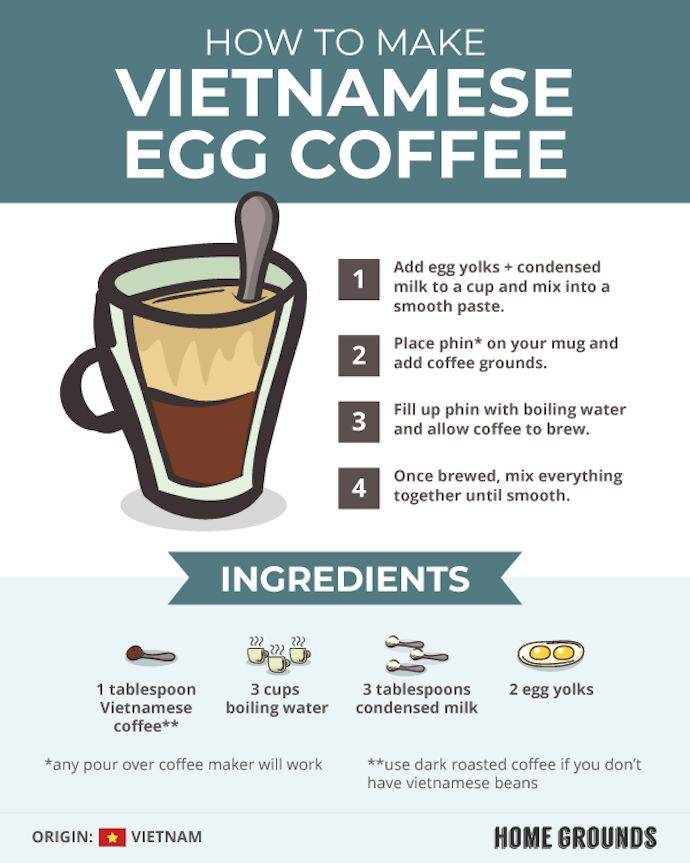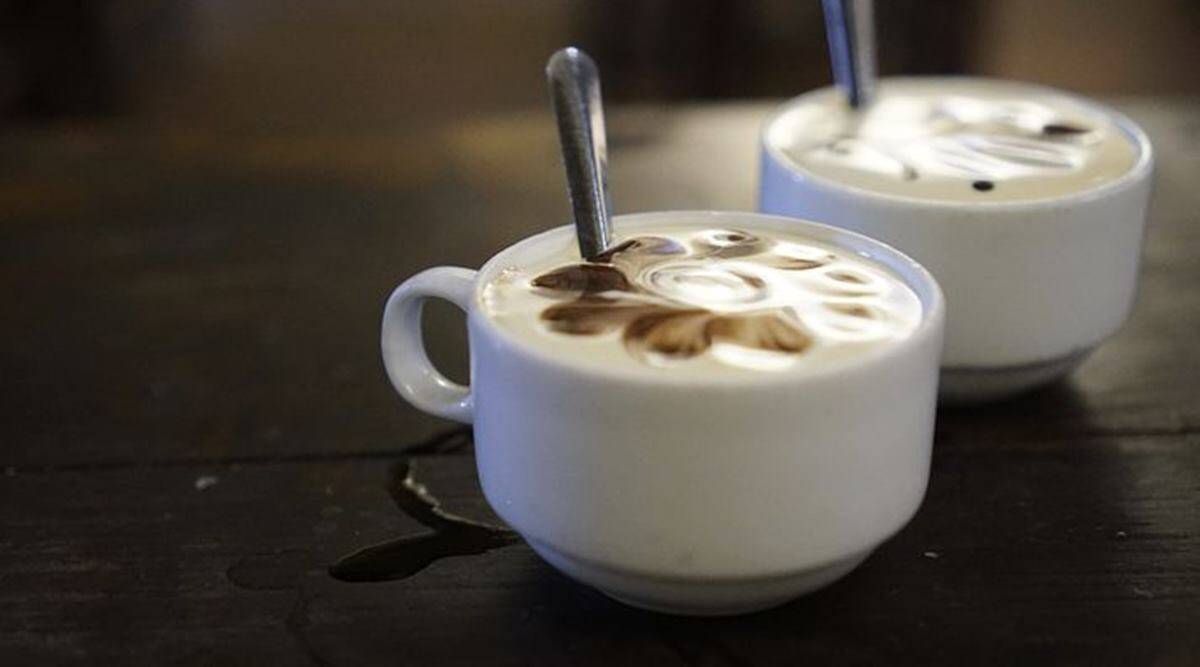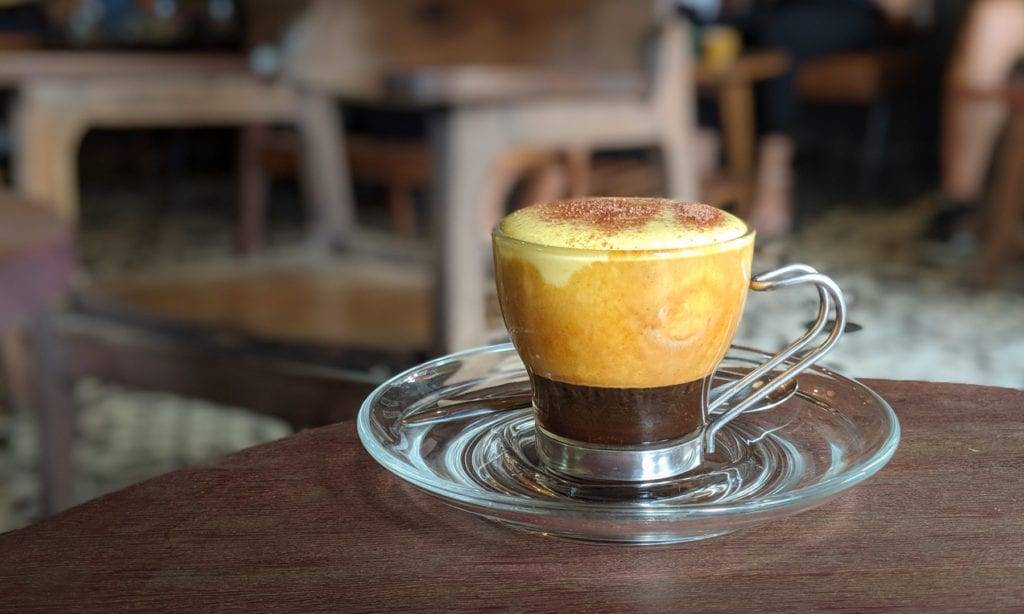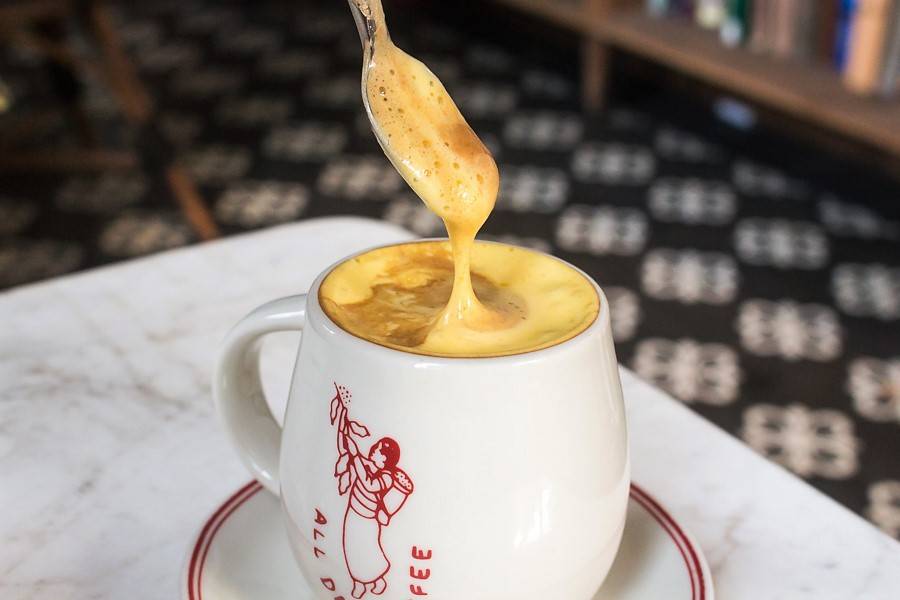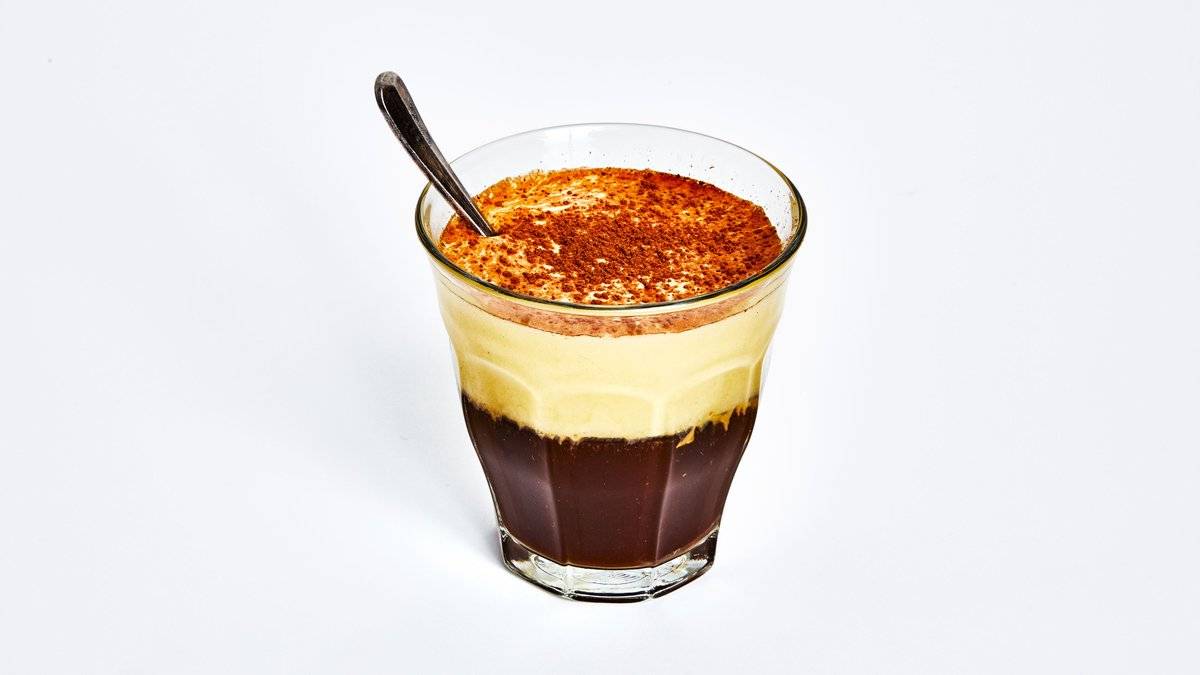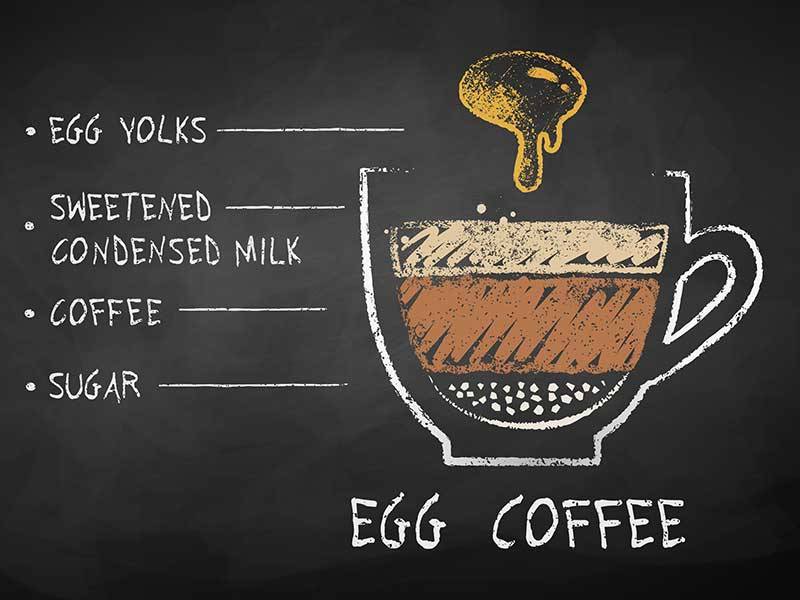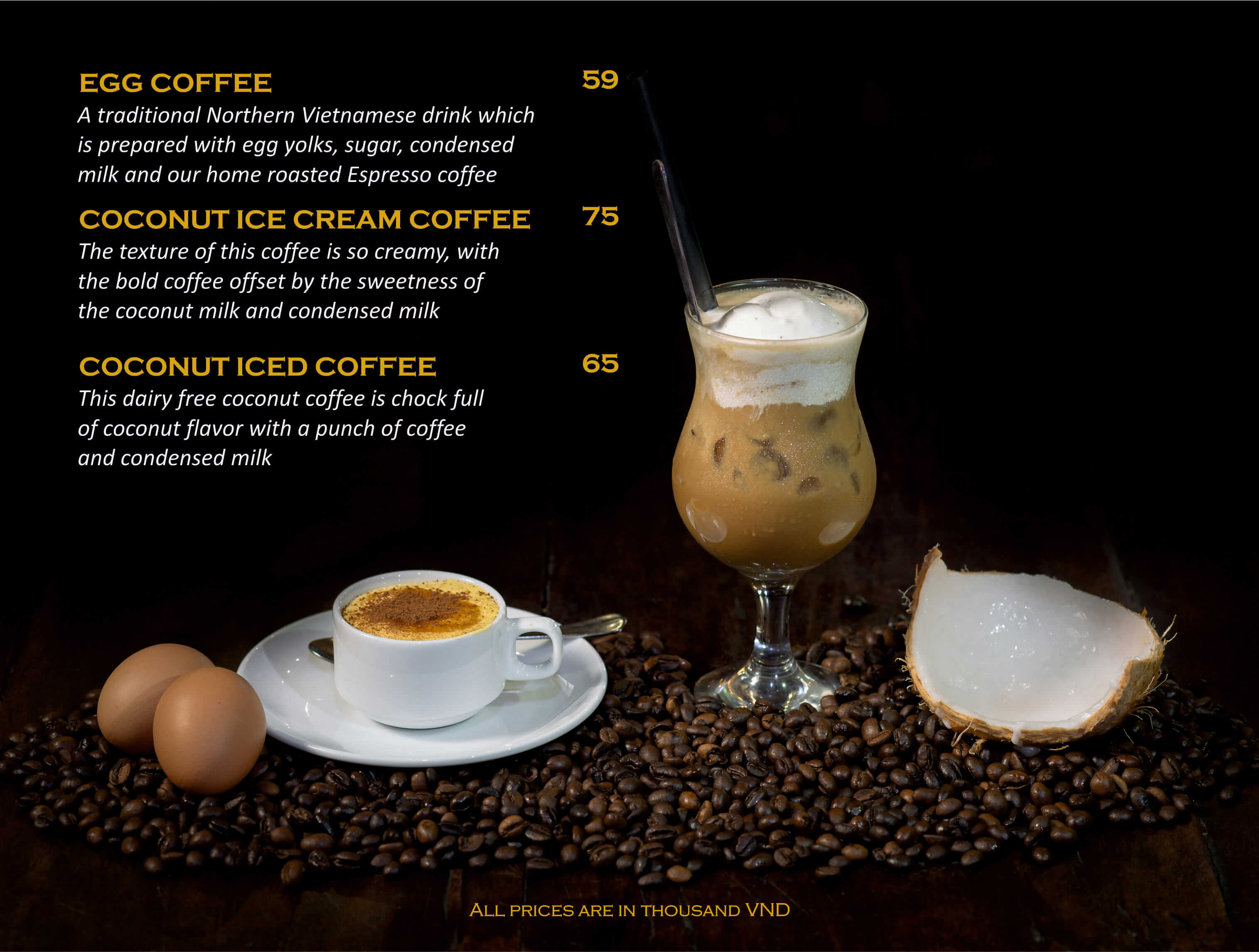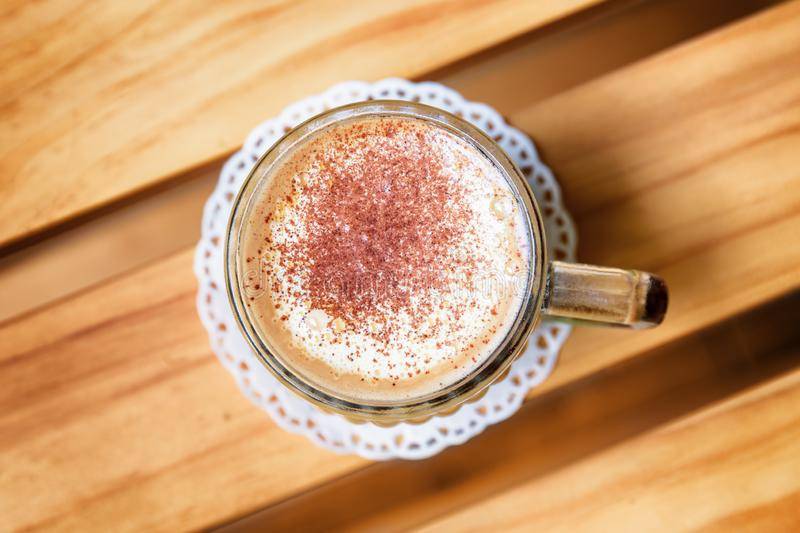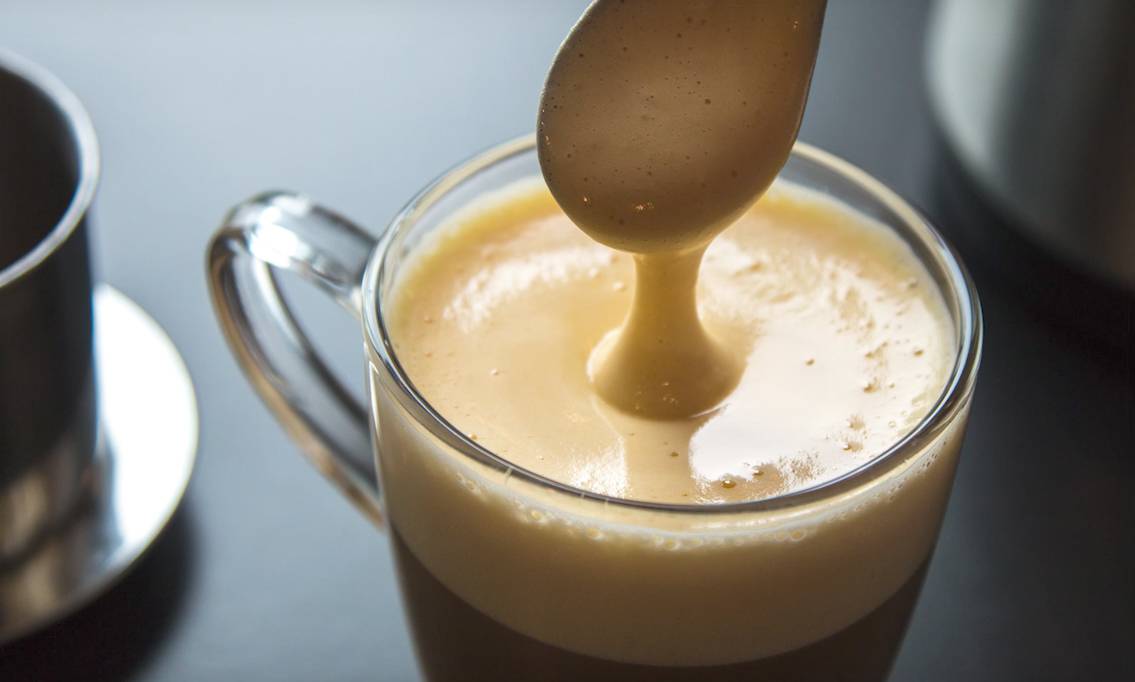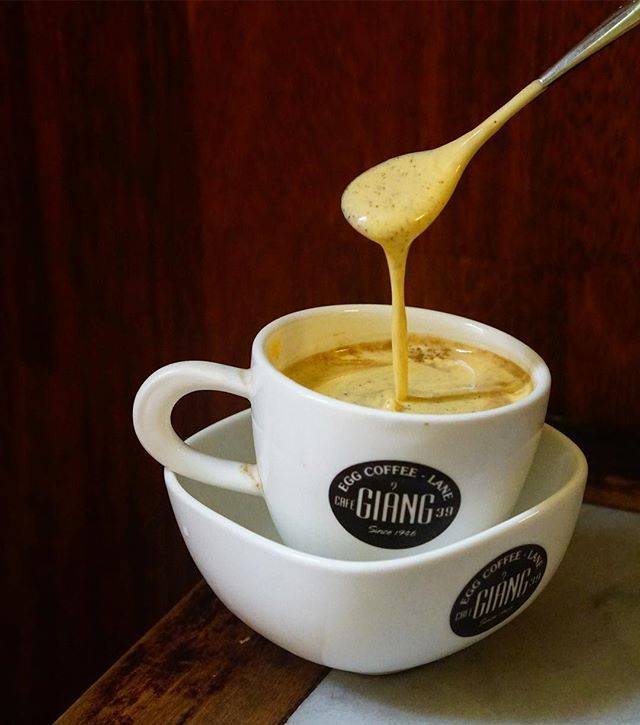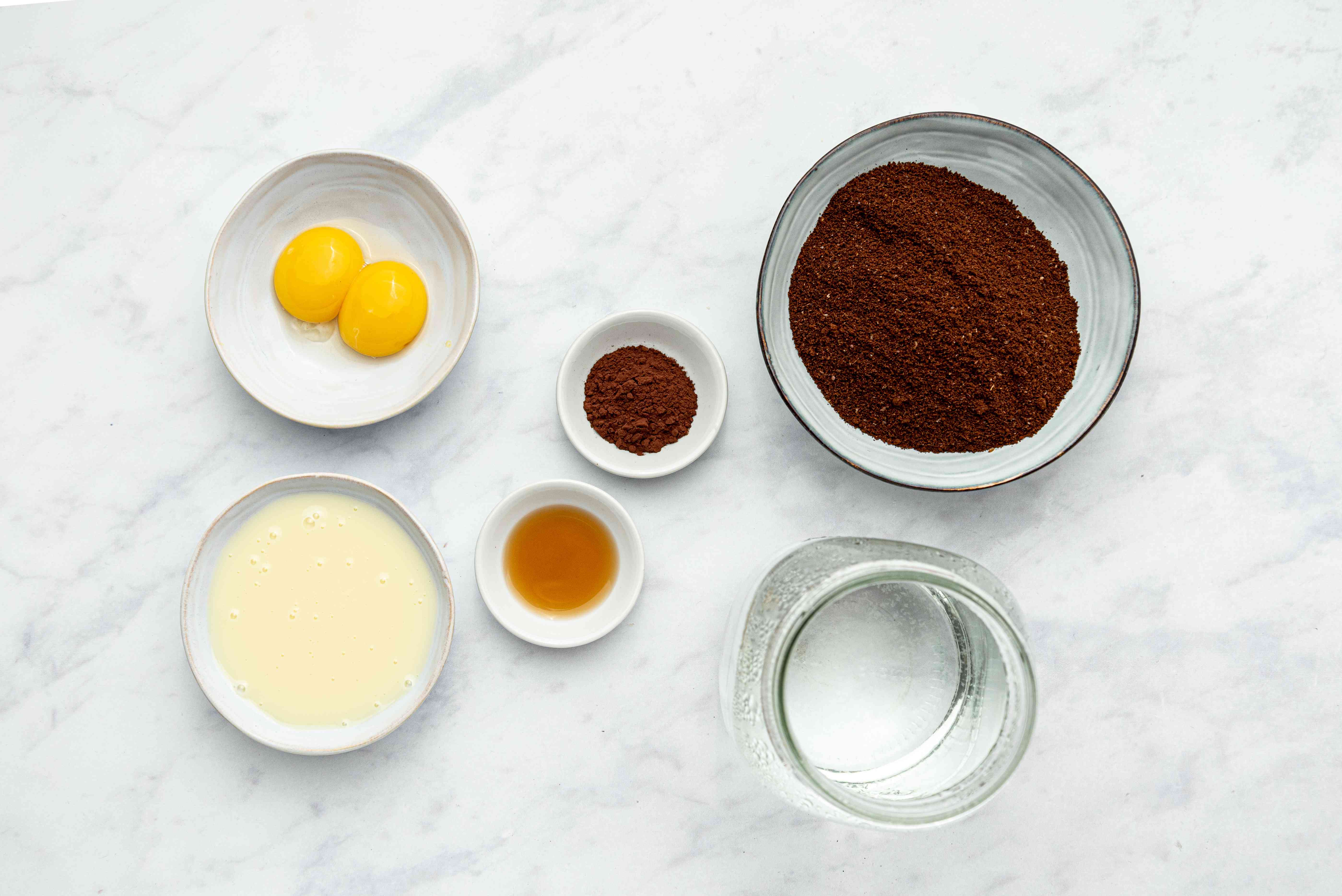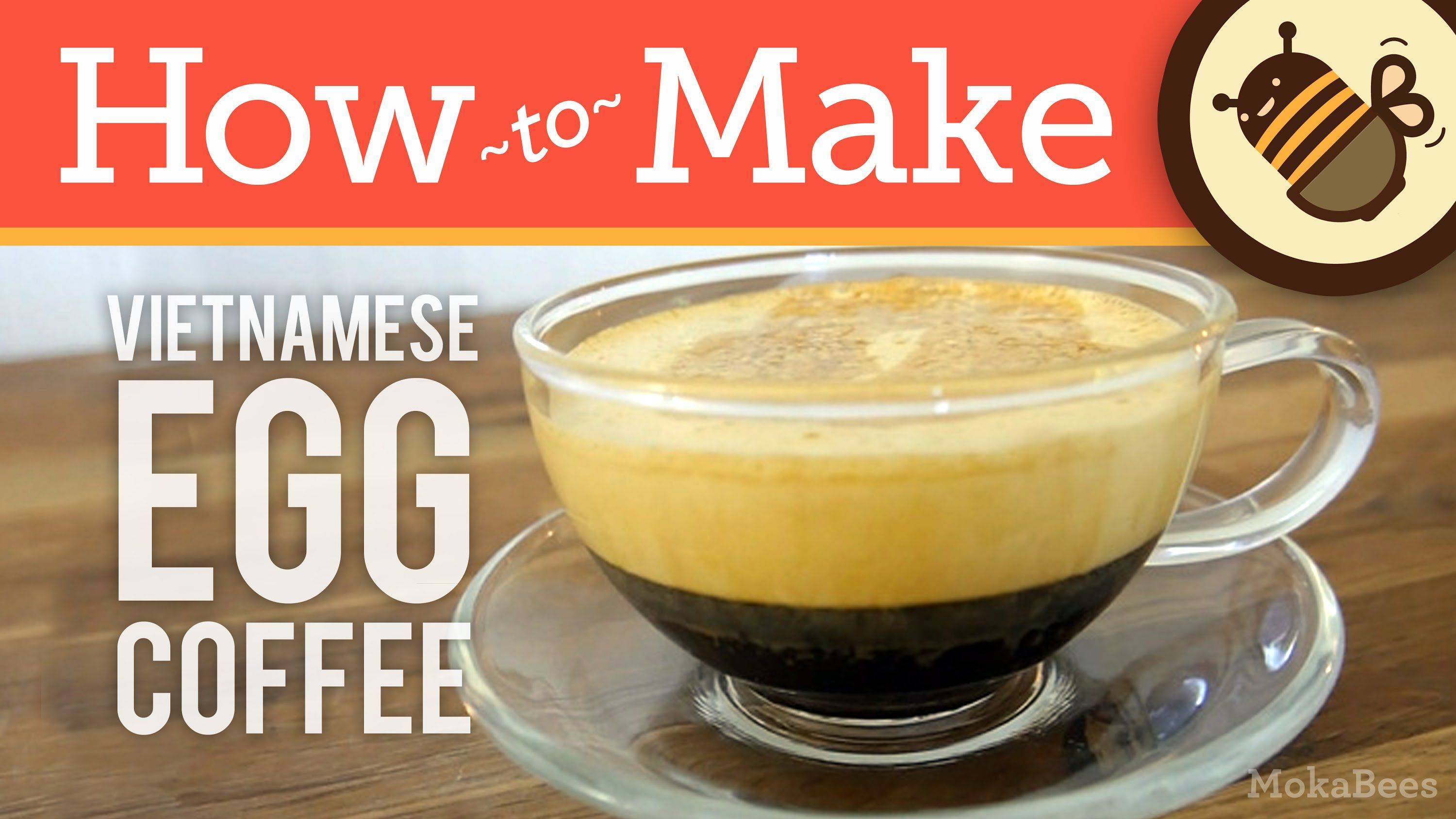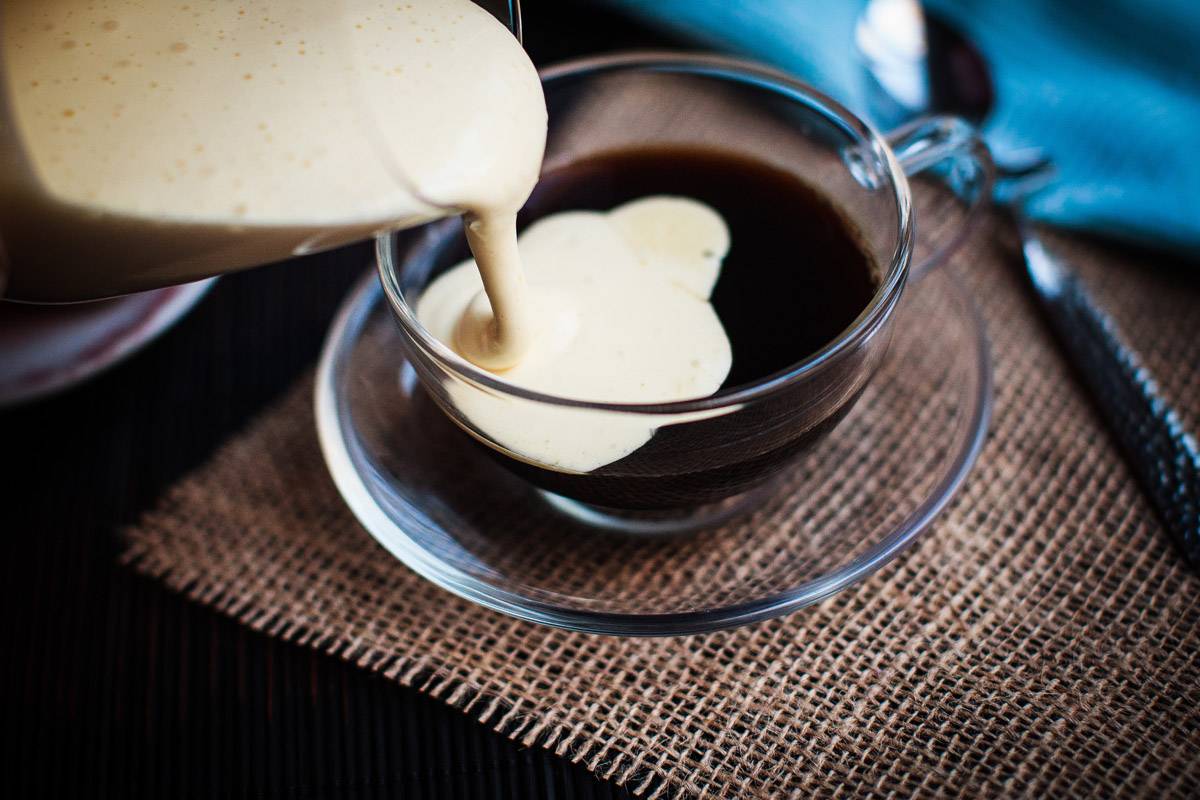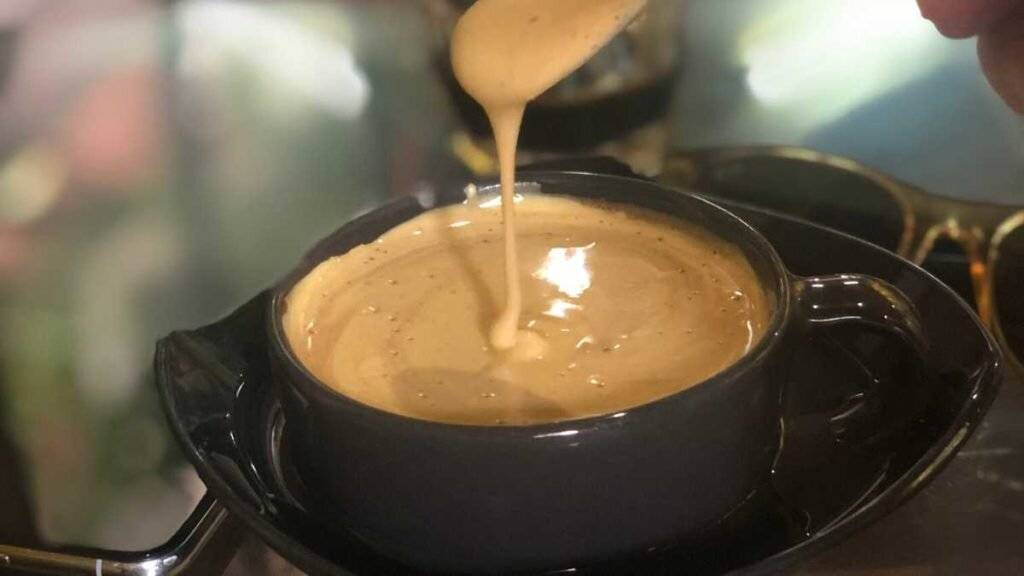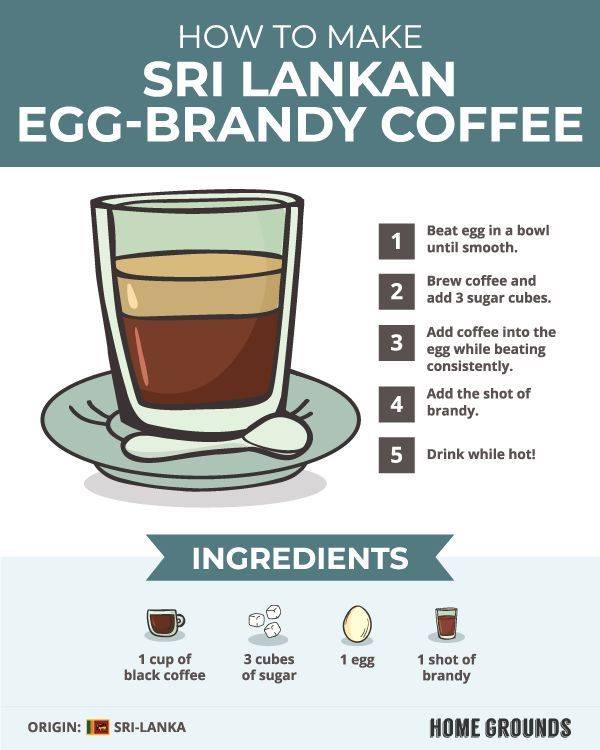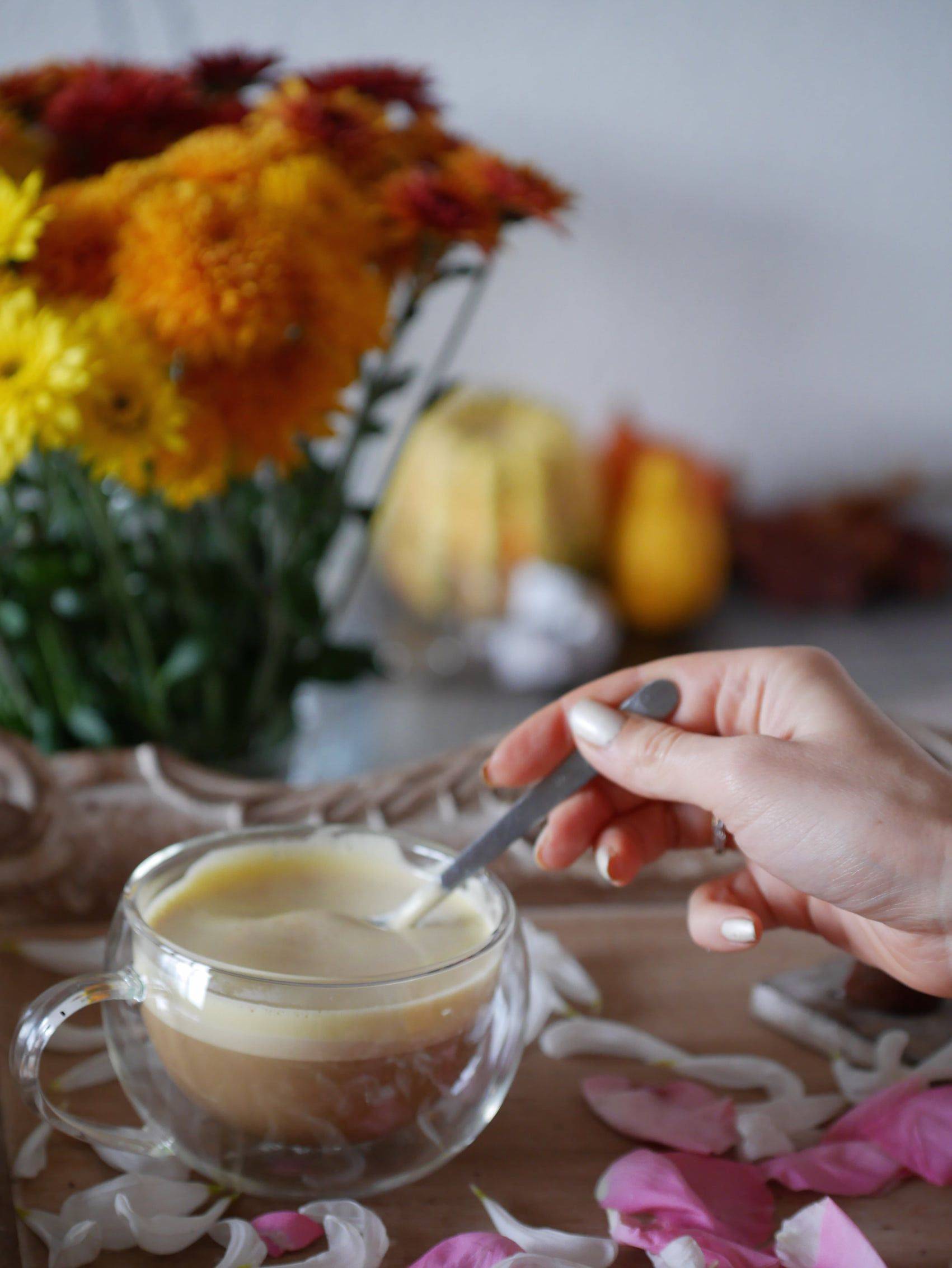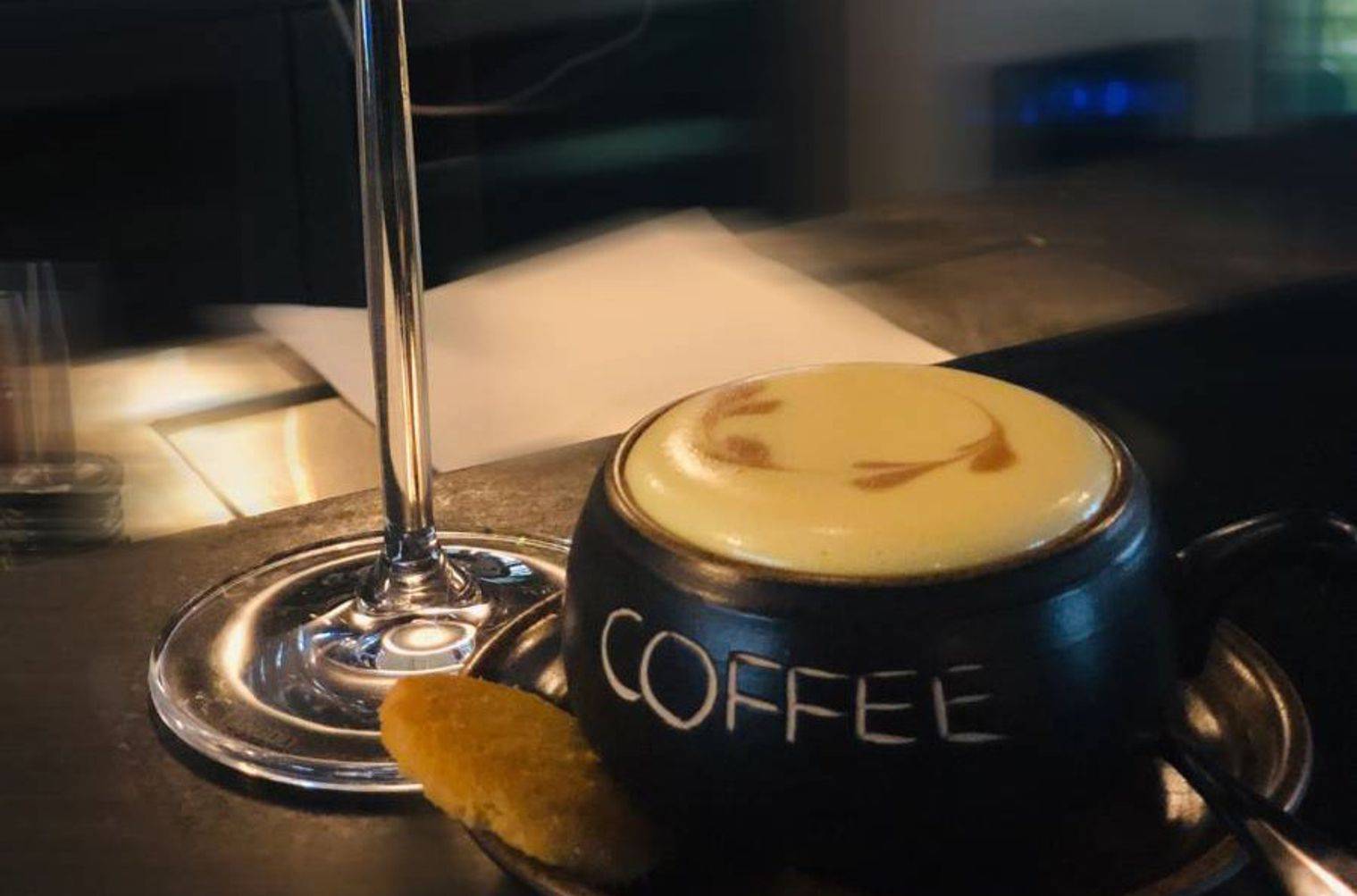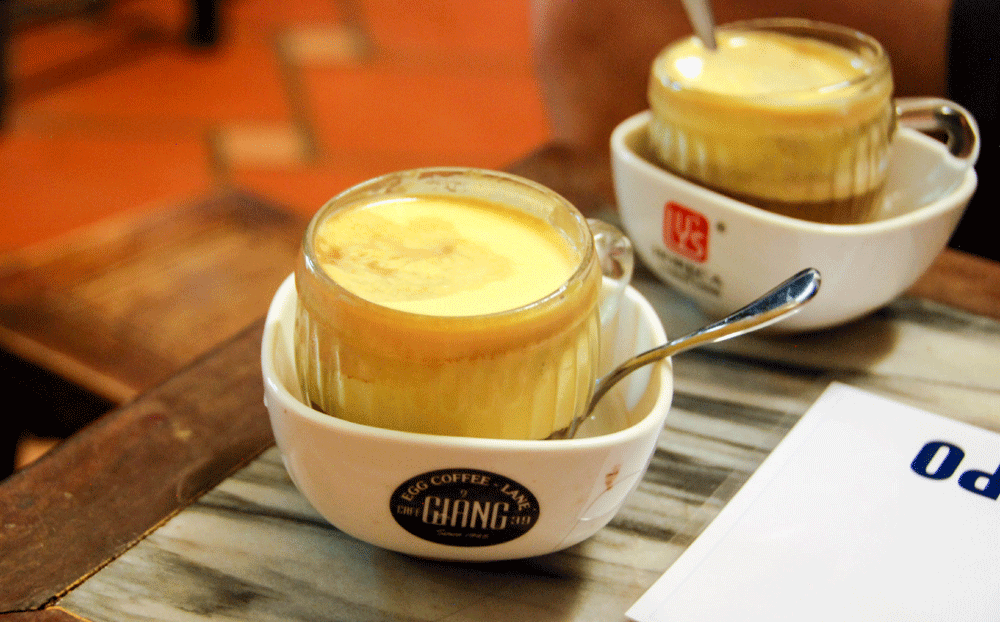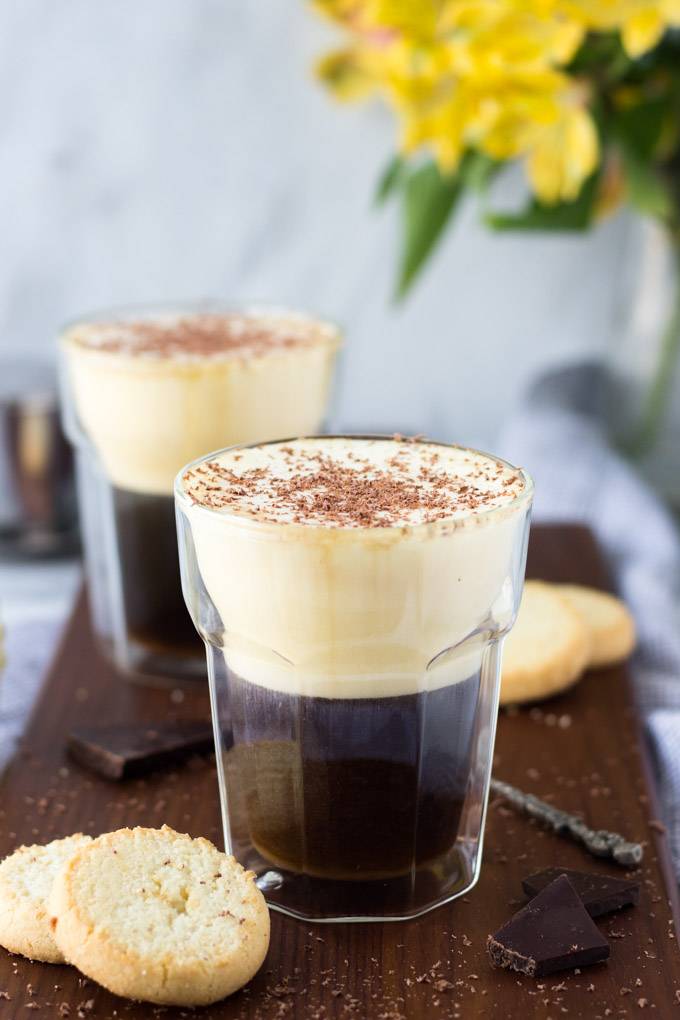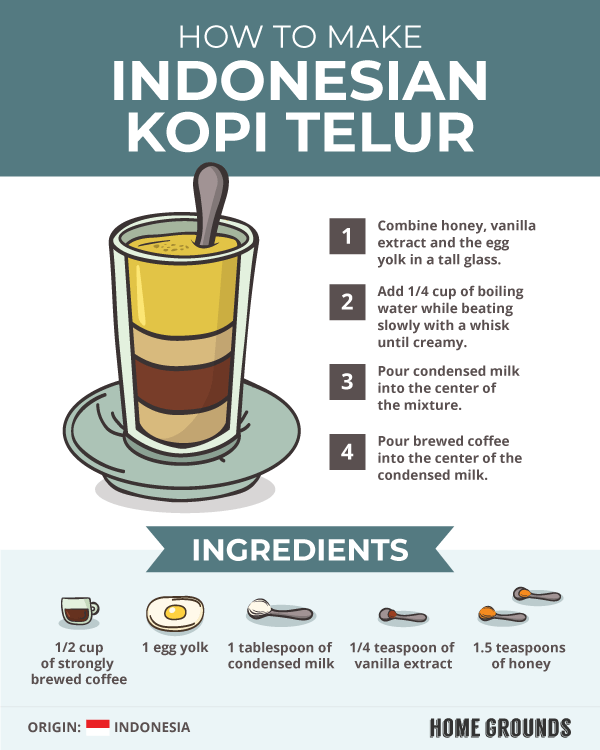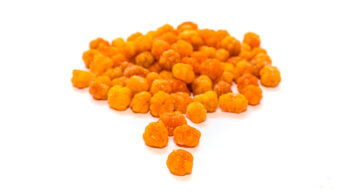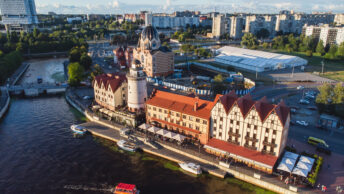Vietnamese egg coffee is a real treat
Vietnamese egg coffee (ca phe trung) is made by beating an egg yolk with sweetened condensed milk for about 10 minutes until it makes an airy, creamy, meringue-like fluff. Are you drooling yet? This eggy goodness is then slowly poured on top of hot espresso, or iced coffee. Are you with me so far?
So, when my family and I traveled to Vietnam last Christmas to visit my daughter, she hooked us up with a street food tour given by her friend Thanh who owns a tour company called Maia Travel. My daughter now helps her with tours and is part of the team. Here is Thanh and the team.
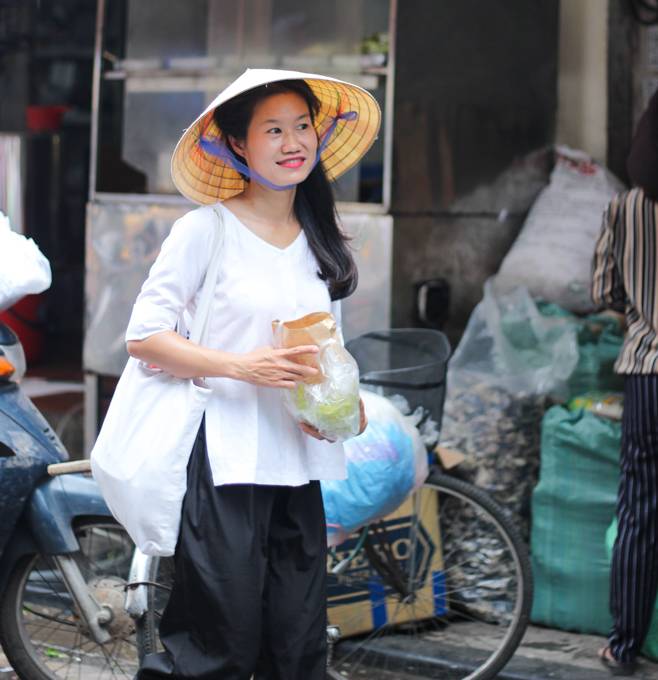
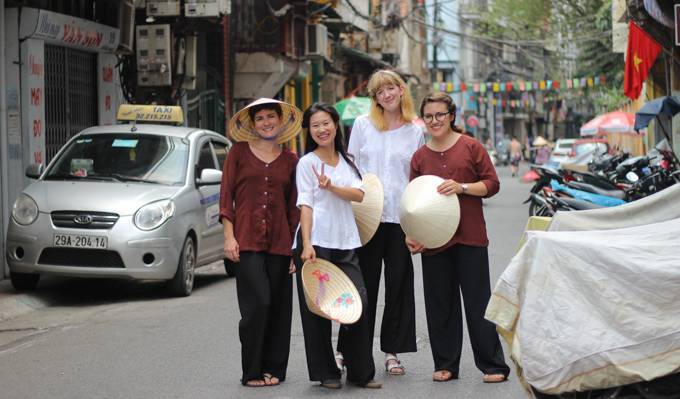
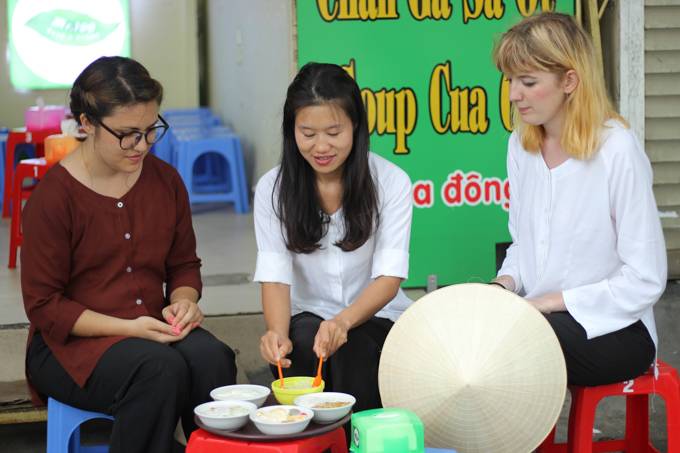
The egg cream on top of the coffee was rich and silky, but not overly sweet. The Vietnamese espresso underneath was strong enough to color my hair AND keep me up for days, but perfectly offset by the creamy sweet foam on top. Yes, this is definitely dessert coffee.So, then, how did such a lovely treat come to be? Well, my daughter’s friend, Thanh, who gave our street food tour, told us the story:
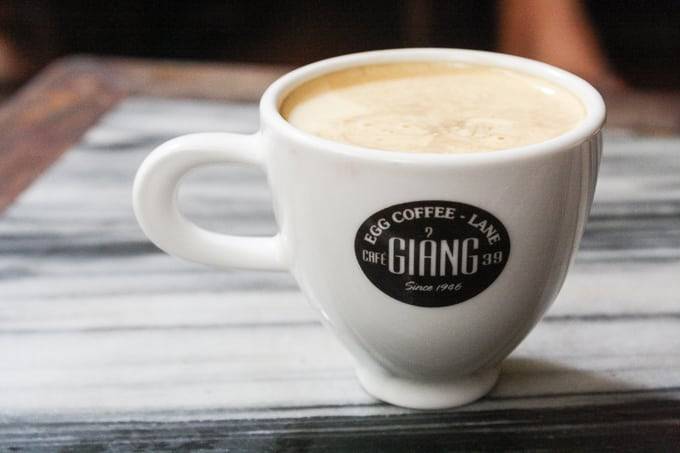
V – Authentic Vietnamese egg coffee recipe
You also totally can prepare yourself and your family a cup of delicious egg coffee with the following simple ingredients and recipe.
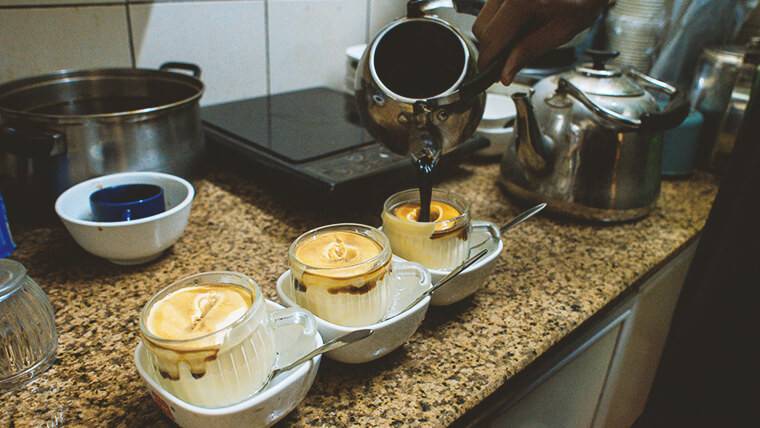
Source: Giadinhmoi
1 – Necessary ingredients for 1 person serving
– Coffee powder: 3 teaspoons
– Fresh chicken eggs: 2 eggs
– Condensed milk: 1 tablespoon
– Sugar: ½ teaspoon
– Raw honey: 1 teaspoon
– Boiling water
2 – Vietnamese egg coffee brewing steps
Step 1: Put coffee powder into the filter and pour boiling water in then close the lid to make coffee.
Step 2: Divide the egg whites and the egg yolks in two separate bowls (taking two eggs)
Step 3: There are two common ways to make the egg cream
Method 1: Using the egg white
– Whisk the whites with sugar and honey and continue until you end up with a fluffy white mixture.
– Put condensed milk in the bowl containing yolk and use the egg beater to whisk until it is frothy and has a distinct aroma.
Method 2: Only using the egg yolk to make the egg coffee Vietnam
– Whisk egg yolks with sugar and honey first until the sugar dissolves and the mixture is soft and intact.
– Add 1 tablespoon of condensed milk and continue whisking until the egg cream is very smooth and smells good. You now can pour the mixture into a cup
Step 4 in the Vietnam egg coffee recipe
Pour the hot black coffee into a cup and place in a bowl of warm water. Then, slowly pour the whipped egg cream into the cup, this light mixture will float on top of the coffee. Done!
Known as the world’s second largest coffee producer, Vietnam is famous for its wide range of coffee varieties, including filter coffee, iced milk coffee, coconut milk coffee, weasel coffee,… and especially egg coffee. After more than 70 years, for international friends, Vietnamese egg coffee is still a proud drink of this country, imbued with strong national identity. If you have the opportunity to visit Vietnam, you should definitely remember to reward yourself with a cup of egg coffee to recharge!
Vietnamese Egg Meatloaf (Chả Trứng Hấp)
A simple savoury dish of ground pork, shrimp, and eggs mixed with mung bean noodles and crispy wood ear mushrooms, topped with golden egg yolks, and steamed to perfection.
Servings: 8 people
Calories: 350kcal
Ingredients
- 20 g wood ear mushrooms (~ a scant 1/2 cup)
- 500 g ground pork
- 200 g shrimp minced (see note)
- 5 large eggs (3 whole, 2 separated into yolks and whites)
- 200 g shallots diced (3-4 medium shallots)
- 1 medium carrot shredded
- 2-3 cloves garlic minced
- 50 g mung bean noodles
- 2 tbsp fish sauce
- 1 tbsp sugar
- 1 tsp salt
- 1/2 tsp black pepper freshly ground
Instructions
- Soak the wood ear mushrooms in warm water for 15-20 minutes, or until softened and pliable. Once the mushrooms are ready, chop them into thin slices, or mince them.
- Soak mung bean noodles in cold water for 10-15 minutes. Once they’re soft and flexible, cut them into approx. 5 cm (2 inch) pieces.
- Combine all of the ingredients EXCEPT FOR the two reserved egg yolks in a large bowl. Mix thoroughly, ensuring that the eggs and egg whites are distributed evenly.
- Line a large, flat pan with parchment paper. A brownie or cake pan works nicely, but anything that’s not too deep and fits in a steamer will work. If you don’t have parchment paper you can use aluminum foil or some vegetable oil to line the pan.
- Spread the mixture in the pan. Smooth out the surface as much as you can.
- Whisk the egg yolks with a pinch of salt. Pour them evenly over the surface of the meatloaf, tipping the pan to get the mixture to the edges if necessary.
- Place the meatloaf in a steamer (see notes for variations). Cover and steam for 20 minutes. You may need to adjust the cooking time if your pan is on the small side, as it will make the meatloaf thicker. If in doubt, check the internal temperature with a meat thermometer – it’s done at 71°C (160°F).
- When uncovering the finished meatloaf, take care to let condensation on the lid drip away from the egg mixture to avoid discolouring it (there’s nothing dangerous with getting water on the top, but it’s less attractive). Let the finished meatloaf sit for about 10-15 minutes before slicing and serving alone or with broken rice.
Notes
You can substitute crab for the shrimp, or omit the seafood altogether and use more pork.
Cooking Variations:
- Baking – if you don’t have a steamer you can bake the mixture without the egg yolk layer on top in a 200°C (400°F) oven for about 30 minutes (assuming a fairly thin meatloaf – about 2 inches – you’ll need to extend the cooking time to make up for a thicker meatloaf. If in doubt, cook until the internal temperature is about 155°F before adding the egg layer). Remove the meatloaf from the oven, spread the yolk mixture over the top and return to the oven until the egg is golden and set (4-5 minutes). Cool and serve as for steamed version.
- Instant Pot – this is basically just the steamed version adapted for an electric pressure cooker. You’ll most likely need a smaller, deeper pan (or half the recipe) in order to use the Instant Pot, so the cook time isn’t any shorter than for a steamed version. Place the metal steamer insert in the bottom of the Instant Pot and add 1 cup of water to the bottom of the pot. Place the meatloaf (with the egg yolk mixture already spread on top) on the steamer insert. Seal the lid, ensuring that the valve is closed, then cook on manual (high pressure) for 20 minutes. Quick release the valve and cool/serve as for the steamed version.
(Note that this cooking time assumes that you’ve made a thicker meatloaf in a smaller pan in order to accommodate the IP inner container size – if you do a half recipe you can cut the cook time to about 15 minutes).
Conclusion
Looking at photographs of Vietnamese egg coffee, you could be forgiven for thinking something so beautiful would need expensive equipment and highly technical ability to make. Also, the concept seems odd. However, it is technically easier to make than making a beautiful latte or pulling an espresso shot, and tastes wonderful.
Hopefully, we have inspired you to make Vietnamese egg coffee at home. All you need is a cheap Phin coffee dripper and the time to make it. If you don’t have a Phin dripper, a Moka pot or French press can work too. You can even use instant coffee, as long as it’s bold. Whatever you use to make the coffee, the key is it needs to deliver strong coffee.
If you’re an enthusiast of Vietnamese culture or its coffee, it’s well worth trying! If you are bored by black coffee, we listed 35 types of coffee drinks. You can find some inspiration there.
Different types of coffee in Vietnam
In Vietnam, coffee has long overtaken its nature of simple drink. Below are some of the most famous recipes you can try while traveling across the country. Far from being fancy, it is common to find many of them in most traditional coffee places.
Coffee with milk (ca phe nau or ca phe sua)
Most people drink the dark, strong brew with sweetened condensed milk, a practice that began because the French couldn’t easily acquire fresh milk. Up to this day, fresh milk is not a common ingredient found in traditional coffee shops. You could ask but shouldn’t count on it. In the north of Vietnam, the mixture of black coffee and sweetened condensed milk is referred to as ca phe nau (brown coffee), while in the south it’s called ca phe sua (milk coffee). While it is mostly served cold with ice, you can also order it hot.
Yoghurt coffee (sua chua ca phe)
Like coffee, yoghurt was originally brought to Vietnam by the French and has been adopted into local culinary tradition. Rich and creamy, it’s served with various toppings, from fresh mango to fermented rice – and even coffee. This might sound like an odd combination, but the rich yoghurt pairs amazingly well with a drizzle of black coffee – just stir and sip.
Egg coffee (ca phe trung)
Egg yolk whipped with condensed milk into an airy froth meets dark coffee in this rich concoction: think of it as a Vietnamese take on tiramisu. A Hanoi invention, egg coffee first made the scene in the 1940s, when milk was scarce and egg yolks provided a convenient replacement. Café Giang in Hanoi’s Old Quarter, where it was invented, still serves the egg coffee but other places now offer their own recipe – sometimes even bettering the original!
Coconut coffee (ca phe cot dua)
It is unsure whether this is a traditional recipe or if it was invented by the Cong Caphe chain of boho coffee shops. What is certain however is that it’s become a favourite among the trendy Vietnamese youth in the past couple of years. Black coffee with a tear of condensed milk is mixed with coconut milk and blended with ice in a sort of shake. A more regular version served in some local shops presents a base of ca phe nau (brown coffee) mixed with coconut milk and fresh milk.
Coffee smoothie (sinh to ca phe)
In recent years, coffee has even found its way into smoothies. Popular juice shops perk up creamy blends of fresh fruit with a touch of Vietnamese coffee, sometimes tossing in yoghurt or cashews. In Hanoi, try sinh to ca phe chuoi bo (coffee blended with banana and avocado). In Ho Chi Minh, go for sinh to ca phe sapoche (coffee blended with sapodilla, a tropical fruit with a custard-like taste). Both are delicious ways to get your caffeine fix and your vitamins at the same time.
How To Pasteurize Eggs
There are safety concerns around using raw eggs. Some places sell pasteurized eggs. However, in other countries, raw eggs shouldn’t be used directly for making this coffee.
Here’s a quote from the FDA article, What You Need To Know About Egg Safety:
However, you can pasteurize your eggs at home to avoid salmonella poisoning.
Here’s how:
- Remove your eggs from the fridge and leave them until they are at room temperature.
- Place the eggs in a saucepan and add water until they are fully submerged.
- Turn on the stove to a medium setting, then gradually heat the water to between 135 °F – 140 °F (57 °C-60 °C). Use a thermometer for accuracy.
- Hold that temperature for between three and five minutes depending on the egg size (three minutes for standard eggs, five minutes for extra-large eggs). Tip: Adjust the heat setting throughout this step – any higher than 142 °F, and the eggs will start cooking.
- Take out the eggs and allow them to cool in a bowl of cold water.
Here’s a video explains shows the process in greater detail:
How to make Vietnamese egg coffee?
Although Vietnamese egg coffee is well-known around the world, it hard to find a coffee shop that carries this drink outside of Viet Nam.
Therefore with this recipe, you can completely prepare for yourself and your family the delicious, nutritious egg coffee without having to go far.
The nature of the egg is very eggy. Therefore, you need to be very meticulous and pay attention to each stage of preparing this drink. The way to make egg coffee is also quite simple; you can follow the steps below.
Step 1: Making filter coffee
First, rinse the filter with boiling water, then add 20g of coffee to the filter and press down on the lid. Slowly pour 15ml of boiling water in a circle around the filter to infuse the coffee, wait for 2-3 minutes for the coffee to swell, then pour the boiling water to 3/4 of the filter, cover and let the coffee drip.
Step 2: Making the egg mixture
Separate two egg yolks and put it in a mixing bowl, add condensed milk, sugar, and whisk until it becomes a thick cream. If you use an electric hand mixer, it can be quickly done in 2-3 minutes.
Step 3: Mixing egg mixture with coffee
For hot egg coffee, at first, put your cup of filter coffee into the microwave to heat it.
Then slowly pour the egg mixture onto the surface of the cup of hot coffee. Coffee and egg mix should have a ratio of 1:1 to achieve the best level.
Finally, garnish with some cocoa powder.
Special tips:
- If you want to drink it a little bit sweeter, you can also mix some condensed milk with filter coffee before pouring the egg mixture into it.
- To make your egg coffee more fragrant, you can add to it a dash of rum or vanilla syrup.
- For the Vietnamese coffee filter and Vietnamese ground coffee, you can buy it on Amazon through this link.
???? Essential Kitchen Equipment
- Phin Filter: You will need a phin filter to brew Vietnamese coffee the traditional way. I love using the Nguyen Supply’s phin filter because it is easy to use and simple to clean.
- Kettle: You can use whichever method you prefer for heating up the water to a boil. However, when I bought my electric Stag kettle I fell in LOVE. It is incredibly chic, the water heats up really quickly and comes in so many cute colors!
- Mug or Heat Proof Glass: Try to find a glass that has a wide enough brim to hold the phin filter but not too wide where the filter will fall through.
- Small mixing bowl: Any small bowl that allows you to whip your egg yolk, sugar, and condensed milk together will work.
- Electric Whisk: Alternatively you can use a standard whisk for a longer duration, but an electric whisk will save you time and energy and I highly recommend it.
Vietnamese Coffee Macarons
Print Recipe
Smooth, creamy and bittersweet Vietnamese coffee buttercream sandwiched between two crisp and chewy macaron shells. A take on the classic Vietnamese coffee with condensed milk in a macaron!
- Author: Catherine Zhang
- Prep Time: 30
- Cook Time: 15
- Total Time: 45 minutes
- Yield: 12 1x
- Category: Cookie
- Method: Intermediate
- Cuisine: Asian Fusion
Ingredients
Scale
1x2x3x
Macaron Shells
- 50 g Almond meal
- 45 g Icing sugar
- 37 g Egg whites
- 37 g White sugar
- Brown gel food colouring
Coffee Buttercream
- 80g Unsalted butter, softened
- 2 tsp Instant coffee powder
- 2 tbsp Boiling water
100g Condensed milk
Macaron Shells
- In a medium sized bowl sieve the almond meal and powdered sugar together
- If there are large chunks of almond meal remaining in the sieve dispose of them
- In a large clean bowl add the egg whites, and using an electric mixer beat until foamy
- Slowly add the sugar and beat until stiff peaks
- Fold the sieved almond meal and powdered sugar into the meringue in 2 additions, scraping around the bowl and down the centre
- Once just folded in, split the batter into two portion
- Add brown food colouring to one half
- Press the batter around the bowl and before folding it into the centre
- Continue until you notice that the lines that form when the batter falls back into the bowl slowly start to disappear
- Repeat with the uncoloured batter
- Transfer to two piping bags with a round tip and pipe out 1.5inch circles
- Allow to dry for 1-2 hours
- Bake in a preheated oven at 140°C for 10-15 minutes (I find that it’s usually done at 13, but it depends on your oven so make sure to check! If you give your macarons a wiggle they shouldn’t be moving, that’s when they’re ready)
- Remove from oven and let cool
Coffee Buttercream
- Combine water and instant coffee powder, mix until dissolved and cool
- Add butter and condensed milk to the bowl of a stand mixer and beat on medium-high for 5 minutes until light and silky
- Add the cooled coffee mix and beat for a further 2 minutes
- Transfer the buttercream to a piping bag fitted with a round piping tip
- Match similar sized macaron shells with each other
- On the flat side of one shell pipe a blob of buttercream
- Top with a matching shell of the opposite colour
- Place in airtight container in the fridge for a day to mature (gives deeper flavour and chewy texture!)
Keywords: coffee, vietnamese, macaron, buttercream, condensed milk, gluten free
Vietnamese metal coffee filter or “phin”
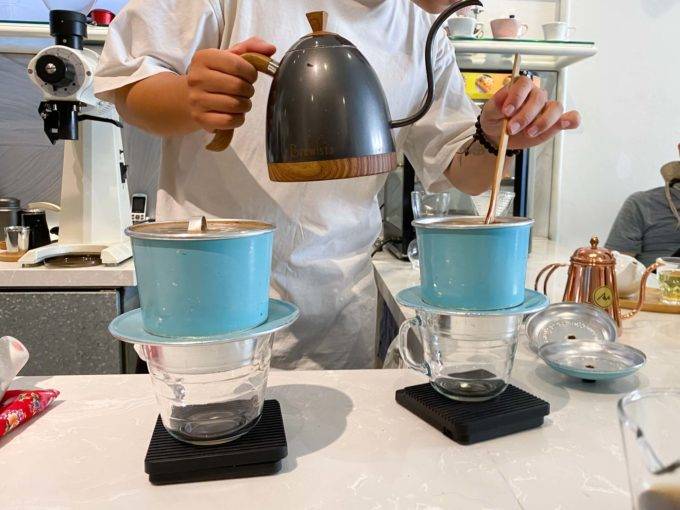
barista brewing in massive phins at Amazing Coffee, Ho Chi Minh City
The Vietnamese coffee filter gives a stronger brew than that of an American drip machine and different than that of a French press, which has a lot of factors.
But the metal coffee filter used to brew Vietnamese coffee is a large part of it what makes Vietnamese coffee unique. The filter is sometimes referred to as a Vietnamese press, or Vietnamese dripper, but it’s all the same item, or the same phin.
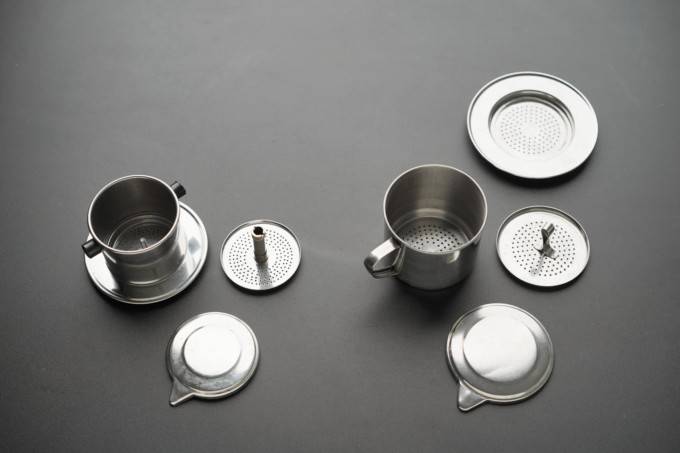
3-piece screw-down filter (left), 4-piece coffee filter (right)
The “phin” (pronounced like feen), is typically made of three or four parts:
The lid – This helps keep the coffee from losing heat or evaporating too much while brewing.
The body – This is the main cylindrical center where the coffee grounds go. The
A filter disk – This goes into the body and sits on top of the coffee. On older versions of the phin I’ve seen, this can screw into a threaded shaft that’s part of the body. This added another variable to adjust while brewing–how tight this was screwed on.
However on most newer types I’ve seen this is a simple disk with a handle on top for removal that sits on top of the coffee grounds. This means the main way you control the speed and strength of brew is reduced to water temperature, water volume, coffee volume (and grind size if grinding your own.
The rim or lip – simply the rim around the filter so you can rest it on a glass while brewing.
A curious history
Egg coffee first hatched (pun intended) in 1946 in Hanoi, Vietnam. An individual by the name of Giang worked at the Metropole Hotel as a bartender. During this time, it was unusual for locals to work for foreign companies, but Giang was a real go-getter. He was passionate and very talented in his pursuits; so when a milk shortage struck Vietnam, he figured out that creamy egg yolks and sugar would make a perfect substitute.
Giang then started making the curious concoction for hotel guests and they LOVED it! Soon, word got around of his talent, and he left his job at the Metropole to open a small coffee shop serving his now famous Vietnamese egg coffee (ca phe trung).
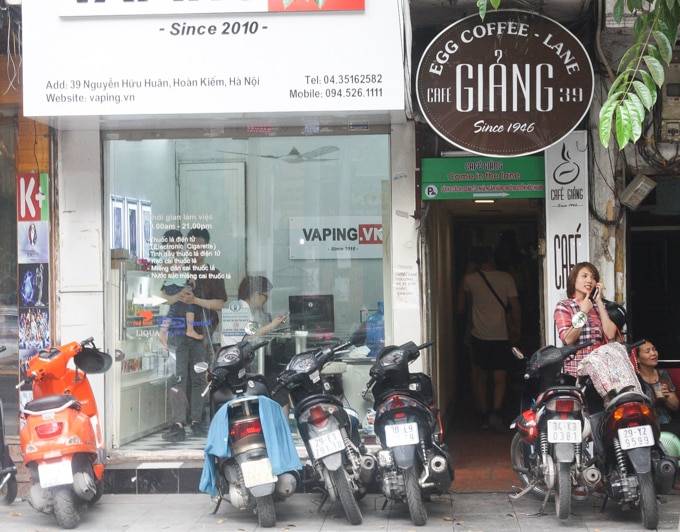
Generations of Hanoians have come to know and love his little family-run coffee shop. Other baristas in town attempted to copy his creation, but nobody did it quite like him. Giang had three sons and one daughter who carried on his brainchild and now owns three cafes in Hanoi that serve the ORIGINAL Vietnamese egg coffee (ca phe trung).
When you taste Vietnamese egg coffee (ca phe trung), not only will your taste buds dance with joy, you will now be a part of an old Hanoi tradition. Creamy, sweet egg fluff atop rich coffee, you won’t forget it.
There are two other delicious Vietnamese coffee drinks that I recommend: Ca Phe Sua Da or Vietnamese Iced Coffee is iced espresso with sweetened condensed milk and Vietnamese Coconut Coffee is espresso served hot or cold with coconut cream. You really cannot go wrong with either of them!
Step by Step Instructions
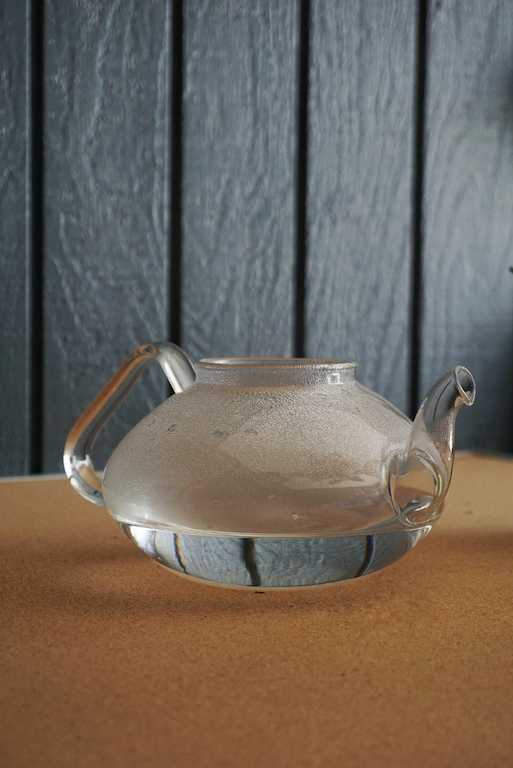
Bring water to a rolling boil.
Step 2
Prepare the Vietnamese coffee filter. Add ground coffee to the filter.
Screw the top filter screen until snug, then loosen it a quarter turn. This is to prevent over tightening. Then set the filter on top of your coffee mug.
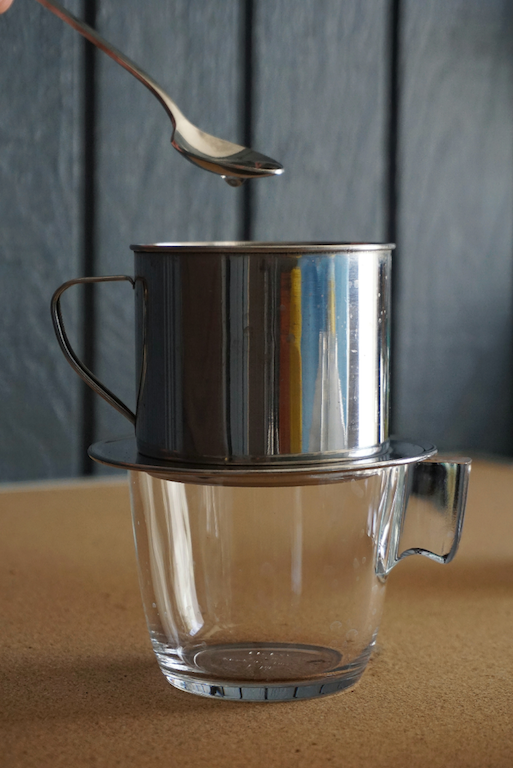
Pour in 2-3 tablespoons of hot water to moisten and swell the coffee.
Step 4
Now fill the filter with hot water.
Adjust the drip by either loosening or tightening the top filter screen. Aim for 5 minutes of brewing time.
Step 5
While coffee is dripping, let’s get the egg yolk out of the white. Whisk the egg yolk at medium speed for about 30 seconds.
Step 6
Add in sugar and continue to whisk at medium speed for 1 minute. Then add in sweetened condensed milk. Whisk at high speed for 1 minute or until egg yolk is smooth and fluffy.
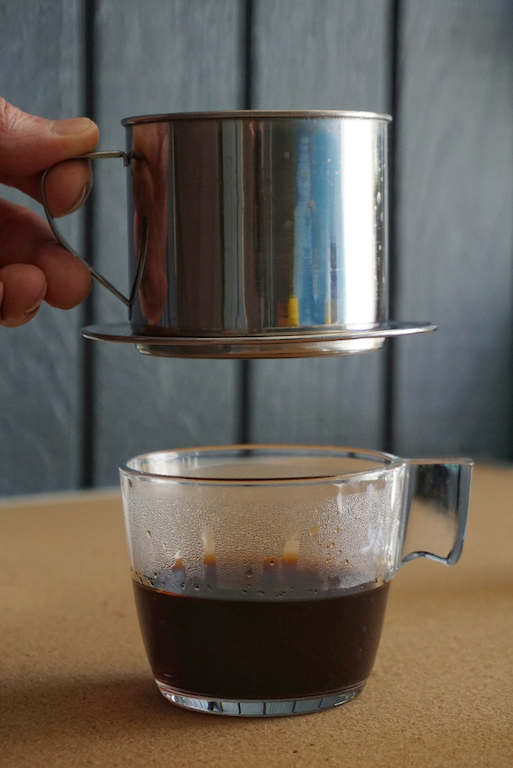
Remove the filter system when coffee has stopped dripping.
Step 8
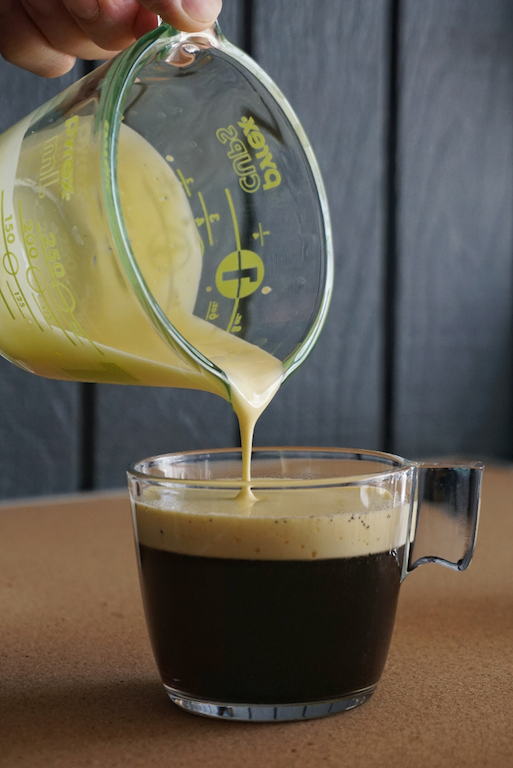
Pour the egg cream on top.
Voila! You’ve just made yourself a cup of Vietnamese Egg Coffee.
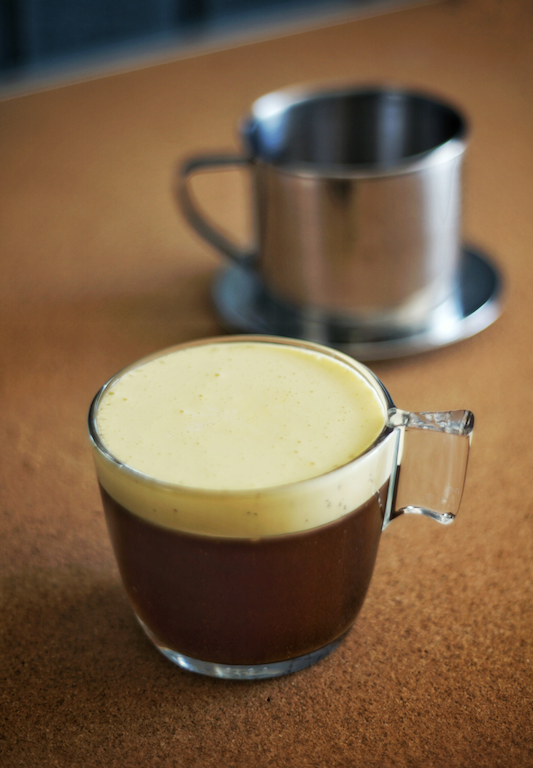
This coffee is so tasty that it might replace your normal coffee, yet it is so quick and simple to make.
I am sure this velvety, sweet and flavorful hot beverage will be on your next to-try list. Please leave your comments below and let me know what you think.
Vietnamese Egg Coffee or Cà Phê Trứng
This delicious coffee completely took us by surprise!
Whilst I had written down ‘TRY THE VIETNAMESE EGG COFFEE’ on the list of ‘must do’ whilst in Vietnam, neither me or Andrzej actually liked the idea of having egg with coffee and I must admit that I was a little bit scared to give this one a go!!
But it was so tasty and delicious that we went back time and time again for this coffee, sometimes having it for dessert at 11pm at night!!
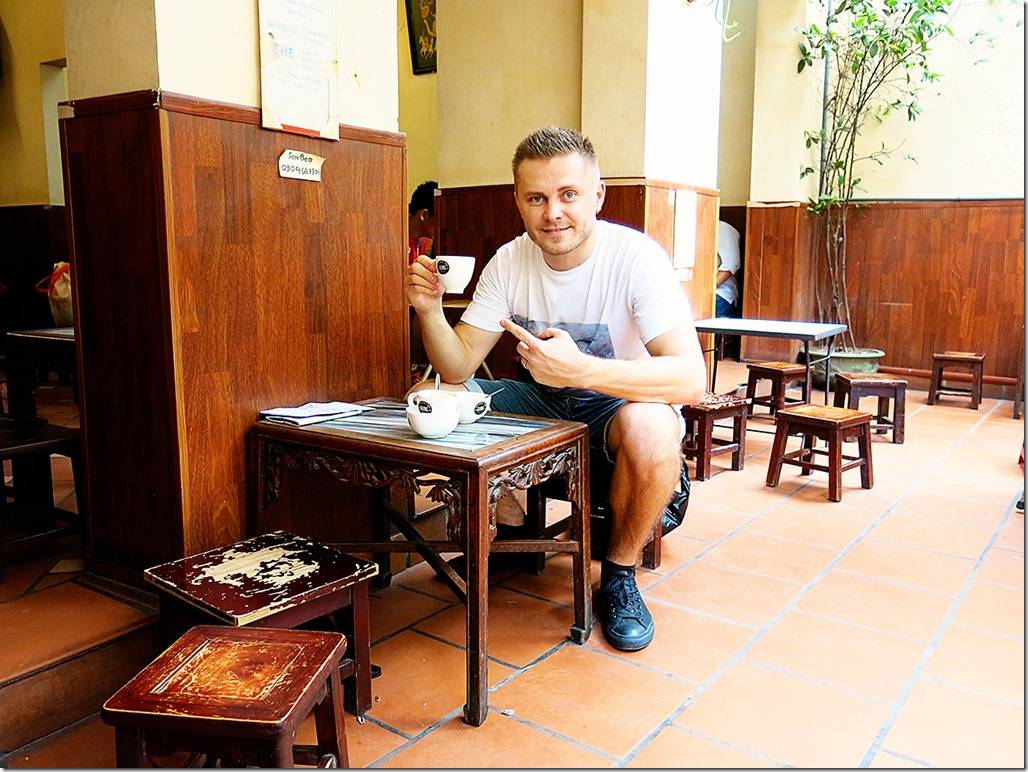
Vietnam Egg Coffee at Giang Cafe
This Vietnamese Egg Coffee is basically made by whipping raw egg yolks with sweetened condensed milk. This delicious creamy concoction is then placed on top of the more traditional strong Vietnam drip coffee.
The topping of this coffee turns this coffee into more of a naughty dessert and has a taste similar to Cadbury Creme Eggs or maybe more like a liquid version of Tiramisu? It is a must try – simply the best Vietnam coffee!!!
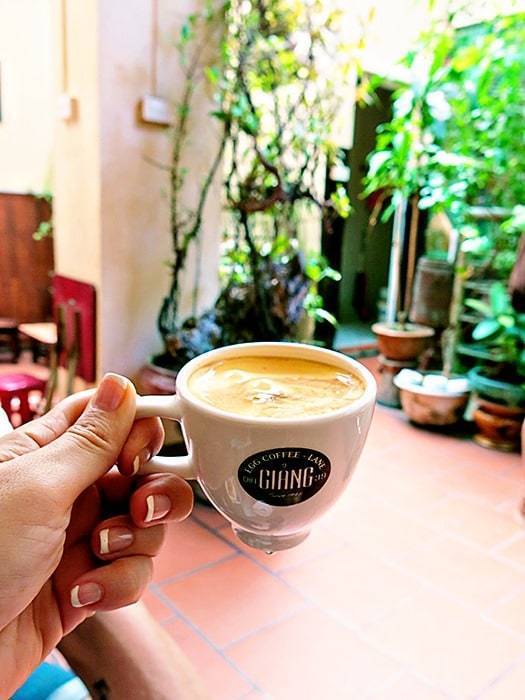
Famous Egg Coffee Hanoi Giang Cafe!
Versions:
- You can try this coffee as either a hot or cold drink. We loved the hot Vietnamese coffee version!
- And if you don’t like coffee, you can choose to have yours with chocolate instead – Cà Phê Trứng Cacao – which is truly delicious as well!!
Where to Find this Drink?
- This coffee is found in the North of Vietnam! So whilst visiting Hanoi, make sure to look up some of the coffee shops who specialise in this coffee style!
- Our recommendation is to visit Cafe Giang (39 Nguyen Huu Huan street, in the Old Quarter). Having an offline GPS will really help here as this cafe is easy to overlook; it is down a pretty narrow little lane! Head upstairs as the area up there is much prettier than down below!!
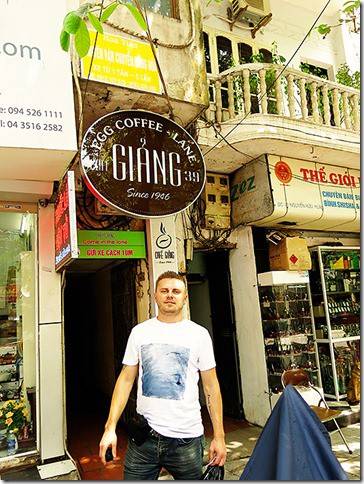
Interesting Fact:
According to Giang Cafe’s site the little cafe is run by family, originally founded by Mr. Nguyen Giang in 1946. The coffee was created due to the fact that milk used to be scarce. He used egg yolk as the cream factor as a result! Pretty cool hey!!!
Why is Vietnamese Coffee so Strong?
The coffee beans used in the production of Vietnamese coffee are from incredibly strong, dark-roasted Robusta beans. These beans are fairly easy to grow and are grown exclusively in the Eastern Hemisphere.
The Vietnam coffee drip adds to the intense rich and dark flavour of the coffee, add in the fact that they don’t add a lot of cream or milk and you are left with a pretty strong coffee!
Thankfully you can often find this type of roast online or in your home country. You can use a simple manual coffee grinder to grind up the beans and whip up your own Vietnamese style coffee wherever you are!
There are also some pretty nifty coffee gadgets that you can buy as a gift for coffee lovers that will make your coffee cold in 60 seconds – so cool!
FAQs & Tips
Can I make egg coffee in a drip coffee maker?
Vietnamese egg coffee differs from Swedish egg coffee, in which the grounds are brewed with egg. Since Vietnamese egg coffee is about the custard foam on top, yes, you can brew coffee in whichever method you prefer and then add the topping. You do want to brew a strong batch if using a drip coffee maker.
Can I make this ahead of time?
I don’t recommend making the topping ahead of time. It needs to be enjoyed fresh for the best results.
What type of glass is best to serve it in?
You can serve this coffee in a typical coffee mug or small glass. I like using double-walled glasses to hold the heat in longer.
What can I do with the leftover egg whites?
Save them to make a strawberry angel food cake or macarons. If you’re looking for an easier solution, whip them up in scrambled eggs or in breakfast sandwiches.
Did you make this recipe? Please leave a star rating and review in the form below. I appreciate your feedback, and it helps others, too!
Where to Find the Best Place for a Cup of Egg Coffee?
1. Giang Café (39 Nguyen Huu Huan)
This is the first place where egg coffee was born. Giang Café is humbly hidden on a small lane on Nguyen Huu Huan Street in the city’s old quarter. It may be difficult to find for visitors, but it is well worth the effort. It continues to be hugely popular among Hanoi’s coffee addicts with its special ca phe trung, or egg coffee.
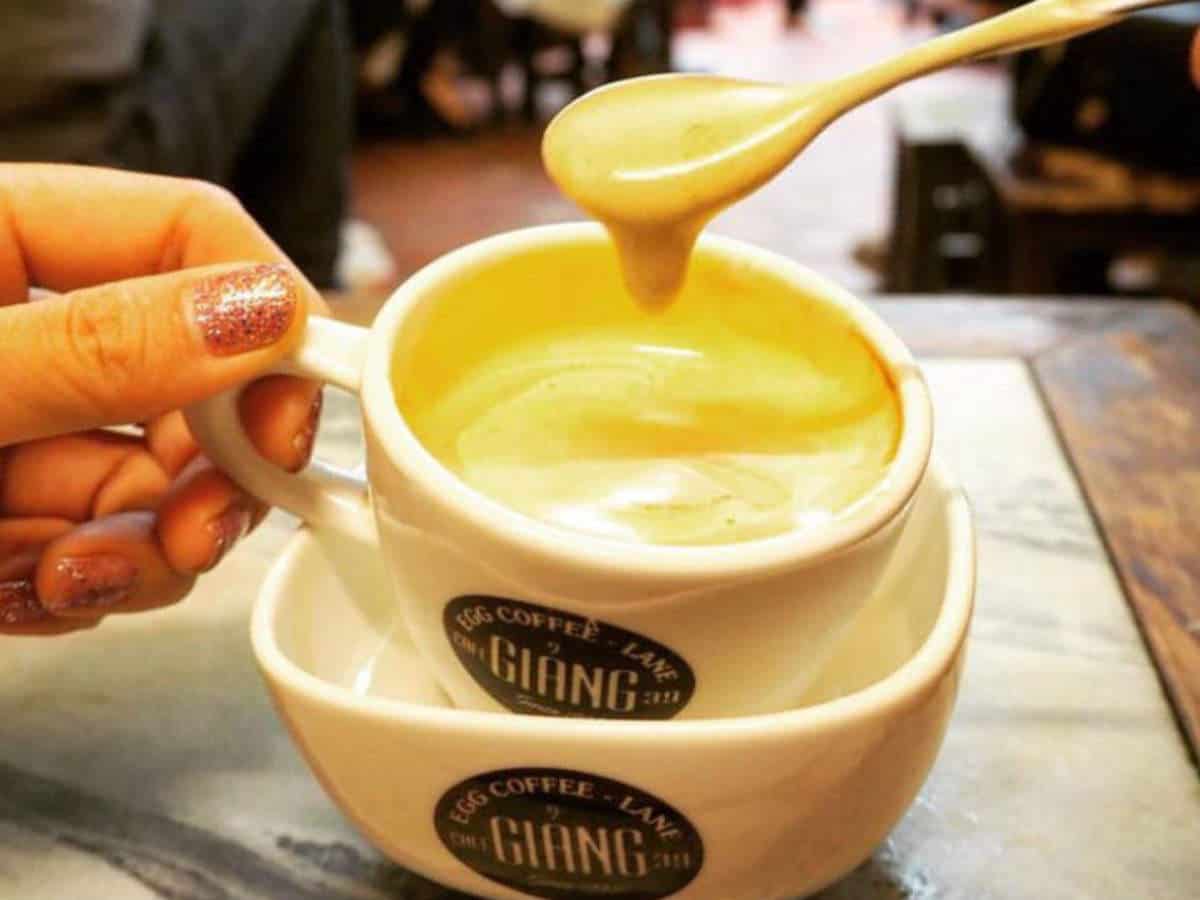 source: timesofindia
source: timesofindia
The restaurant serves a variety of drinks but the best one is still egg coffee. They have two types of egg-coffee: hot egg coffee and iced egg coffee. Giang Café’s coffee is very well prepared, so there is no fishy smell. The taste of the coffee is sweet and greasy. The shiny golden egg layer blends with the black brown coffee layer to create a beautiful coffee cup.
The restaurant has a cozy space that makes guests feel comfortable. Fast service, friendly shop owner. However, the shop has no parking space, so it is quite inconvenient. However, you can go there by bus, and if you really love coffee, don’t miss Giang Cafe.
- Address: Alley 39 Nguyen Huu Huan, Hoan Kiem District, Hanoi
- Phone: 091 700 22 99
- Opening hours 07:00 22:30
- Website: http://cafegiang.vn/
- Price: ~15,000 VND 33,000 VND
- Fanpage: https://www.facebook.com/cafegiang.vn/
Location
2. Dinh Café (13 Đinh Tiên Hoàng)
Packed in a small space but offering a look over Hoan Kiem Lake, this is also a favorite place for egg coffee
 source: dulichtoday.vn
source: dulichtoday.vn
Dinh Café’s menu is monotonous, with only a few drinks. On the list of most prominent beverages are egg coffee and egg cocoa. The slightly bitter coffee taste combined with the greasy taste of the egg is strangely delicious.The shop’s egg cocoa is also very tasty, but a bit sweet.
Another plus point for Dinh Café is that the restaurant has a balcony, overlooking the balcony from Hoan Kiem Lake. It’s romantic when you sit and sip a cup of coffee in the afternoon, watching the surrounding scenery.
- Address: 2nd Floor, 13 Dinh Tien Hoang, Hang Bac Ward, Hoan Kiem District, Hanoi
- Phone: 0359 026 626
- Opening hours: 07:00 22:30
- Price: ~20,000 VND
Location
Tips: Hanoi has so many things to offer regarding food and drink in addition to egg coffee. However, before packing your things to Vietnam, remember to check your Vietnam visa to make sure your entry will not be refused.
Share:
3 Simple Ingredients
There are just three simple ingredients needed to make this incredible Vietnamese egg coffee.
Vietnamese Coffee
Vietnamese coffee is stronger and more bitter than regularly brewed coffee. It’s rich and flavorful, typically brewed through a special filter resulting in its strong flavor.
If you’re not using traditionally brewed Vietnamese coffee, look for a strong brewed dark roast coffee or espresso. This beverage requires a hearty strong cup of coffee to balance out the sweet, creamy topping.
Other ways to make strong or espresso-like coffee include a French Press or AeroPress.
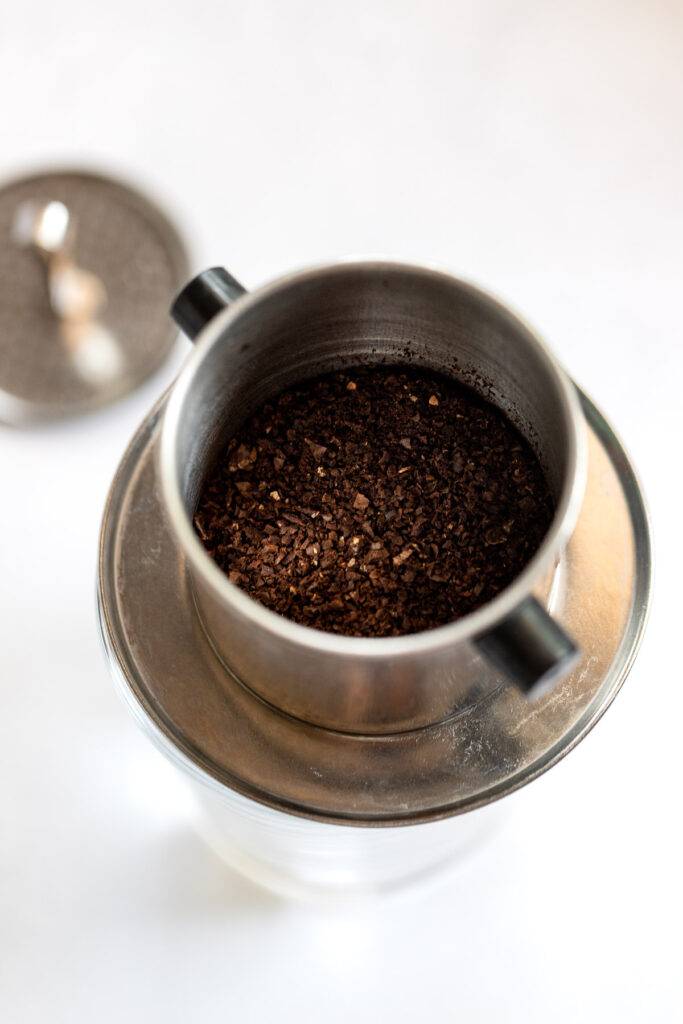
Sweetened Condensed Milk
Sweetened condensed milk is a staple added to traditionally brewed Vietnamese coffee. The creamy sweetness balances out the rich, strong coffee.
Egg Yolks
Let’s clarify: yes, there are raw eggs in this recipe. And raw or partially cooked egg has the potential to pose a risk for foodborne illness. To feel more confident using raw eggs in recipes, be sure you are using pasteurized eggs.
Pasteurized eggs have been gently heated in their shells just enough to cook off potentially harmful bacteria, making them safe enough to use in recipes with raw or only partially cooked eggs.
What is Vietnamese Egg Coffee?
Vietnamese Egg Coffee is made by whipping egg yolk until it is frothy and poured on top of a cup of strong brewed dark coffee. The robust filtered coffee and velvety whipped egg cream contrast each other perfectly as the flavors hit your taste buds. You only need a few simple ingredients that are easily found in your kitchen to make a cup of this coffee.
Some links found in this post are affiliate links, meaning we may receive a commission if you decide to make a purchase, at no additional cost to you.
You can to a printable version of this recipe. Or follow along right now with our step by step images. Let’s begin!
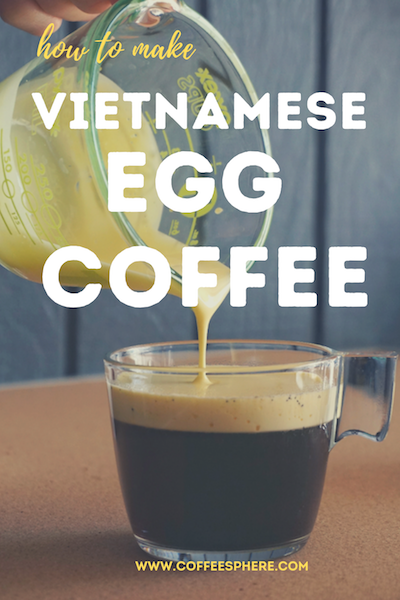
Vietnamese coffee bean brands
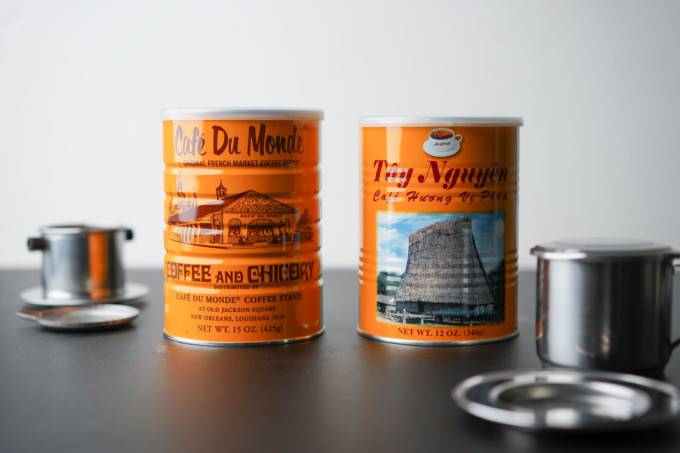
In America there are sooo many popular brands of Vietnamese coffee you can order and have shipped to your doorstep:
- Trung Nguyen – pre-ground
- Trung Nguyen – G7 instant coffee
- Vinacafe – instant coffee
- Chestbrew – Moon Bear whole bean
- Cafe Du Monde – pre-ground (the one I typically use)
- Lang Thang – Saigon Phin Daklak
These are just to name the popular ones available in America! Lately there are many new roasters in America trying to hop on the Vietnamese coffee scene. There seems to be a few small companies popping up every year starting as local roasters, selling at farmers markets, and eventually shipping their beans nationwide and worldwide.
We saw the big name coffee brands like Trung Nguyen above have chains of coffee shops when visiting Vietnam in 2020. In Vietnam there are countless other brands producing, roasting, and selling Vietnamese coffee and beans though that you simply cannot buy in America.
People are passionate about their coffee, and asking which brand or type of Vietnamese coffee is best is sure to stir up some arguments!
Vietnamese coffee varietals and filler?
Notice that Cafe Du Monde isn’t pure coffee! This grind is laced with the ground root of the chicory herb. This mixture originated in Europe during WWII when money was tight and expensive foods like coffee needed to last. Chicory root was used to stretch the coffee supply. After the war, the preference for the chicory flavor became a trend and exists even today.
The new companies have more modern marketing and branding campaigns, and source beans, often times from single family-owned farms in Vietnam for the typical Vietnamese coffee roast. The varietal commonly used for Vietnamese coffee is the robusta bean.
8. Banh Mi or Bánh Mì – Vietnamese Sandwich
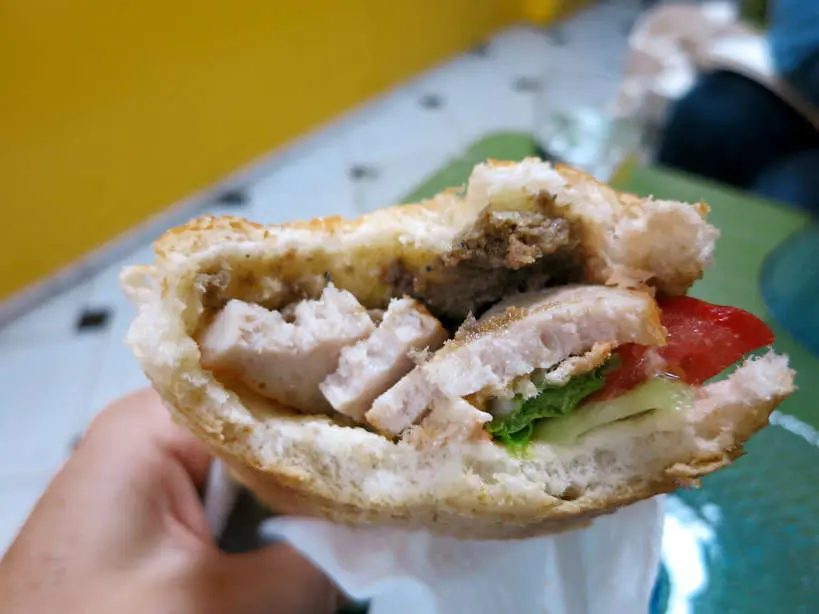
Our first bánh mì sandwich in Hanoi
The banh mi sandwich is truly the best Vietnamese sandwich to fall in love with. While its origins are French, the Vietnamese have made it distinctively their own.
Generally speaking it is an airy Vietnamese baguette made with a combination of wheat and rice flours with a thin crispy crust.
Banh mi is stuffed with pork, pâté, cured ham, a mélange of Vietnamese herbs and vegetables. Coriander, cucumber, carrot, slices, radish, and more make up for the banh mi vegetables depending on where you are in Vietnam.
A wealth of textures and flavors, you will savor spicy, salty, savory, sweet, and aromatic tastes in each bite.
Our favorite banh mi sandwiches are actually not found in Hanoi, but in Hoi An, in central Vietnam.
Drink coffee like a local in Vietnam
A few coffee-drinking tips for your Vietnam trip:
Milky way Don’t even try to ask for decaf. If you prefer your coffee mild, do as the Vietnamese do and order ca phe bac xiu, coffee with lots of extra condensed milk. This will also taste like coffee ice cream and will be a delight for your (very) sweet tooth.
Sweet spot As condensed milk is sweetened, there is no white coffee without sugar. True coffee connoisseurs should opt for ca phe den (black coffee). A touch of sugar will bring out the complex flavours, just as it does with dark chocolate. However, if you want to ensure that your drink isn’t too sweet, ask for it duong (less sugar).
Avoid hunger Cafes in Vietnam don’t typically serve food although some newer cafes do offer quick eats. It is therefore accepted to bring your own snacks and eat on the spot, but you’re better off following the local custom of eating first and then heading to a cafe to relax. In a pinch, you can always nibble on hat huong duong (sunflower seeds).
This article was originally published on June 2015 and was updated in February 2020 by Fabienne Fong Yan
You might also like:
Where did eggnog originate from?
If you think about it, raw eggs are used in other popular desserts too – and egg coffee Vietnam-style can be enjoyed as a type of sweet pudding following a meal, too. Tiramisu uses a mixture of raw eggs in its whipped cream and is hugely popular all around the world. Eggnog is another similar drink, seen especially at Christmas and other festive occasions, which also uses eggs – but also adds alcohol to the mix! Where did eggnog originate? Well, probably in medieval Britain, as far back as the 12th or 13th century. Here, eggs were drunk along with sherry or other spirits, to celebrate good health or prosperity. Recipes vary, but it usually contains:
- Eggs
- Sugar
- Milk
- Double cream
- Rum or other spirit
- Nutmeg and/or cinnamon
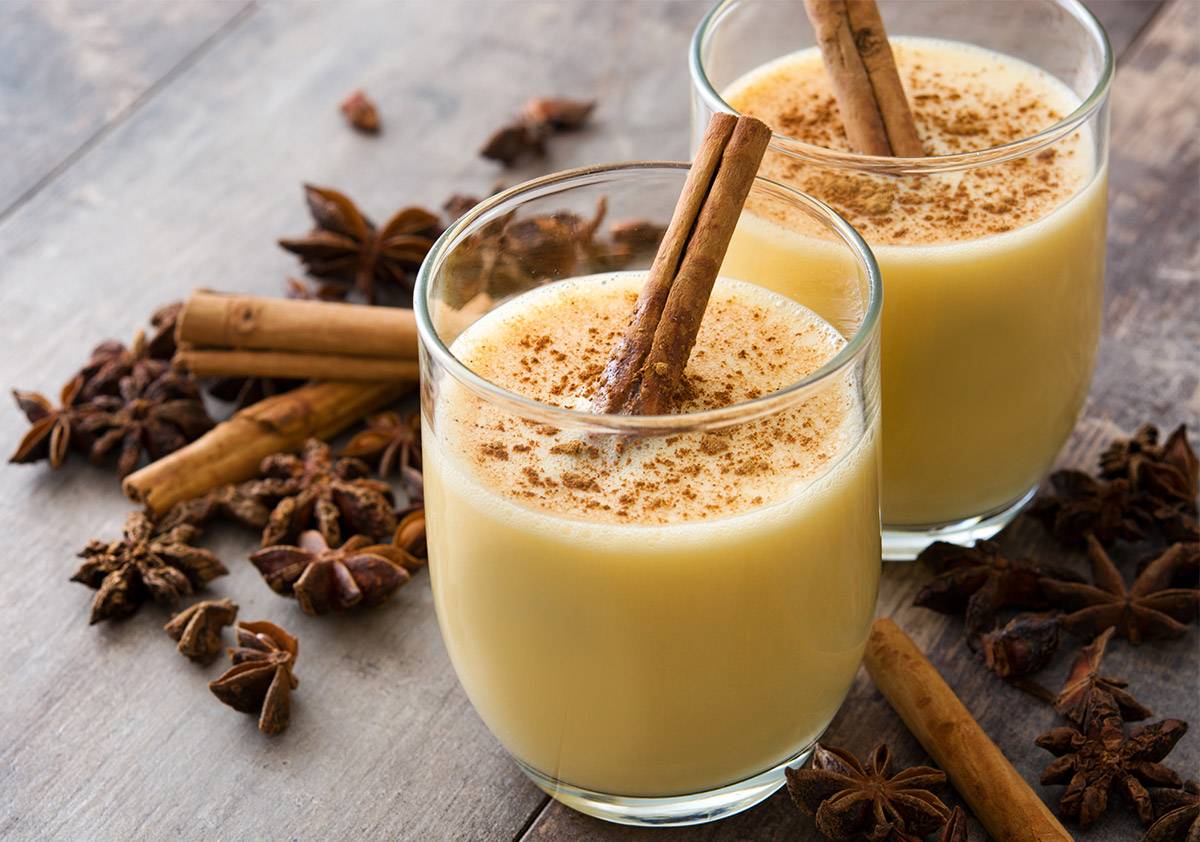
But what about the strange name? The word ‘nog’ is a bit of a mystery, but some think that it comes from the word ‘noggin’, meaning a wooden cup that would be used to drink the eggy goodness.
The popularity of eggnog eventually grew even further when American colonies – often who kept a lot of chickens – became fans too. They weren’t afraid of using a lot of alcohol, either – US President George Washington even wrote his own recipe, which included brandy, whisky, rum and sherry!
One word of caution, however; if you’re pregnant, it’s probably a good idea to avoid raw eggs, limit caffeine (and definitely avoid eggnog), and everyone making egg coffee should ensure that the eggs are from a trusted supplier and are as fresh as possible.
Other Asian countries also have their own versions of eggs in coffee – for example, in western Indonesia they often add honey and vanilla extract to coffee, and in Sri Lanka they mix in some brandy. But for a healthy, refreshing and truly unique coffee eggs are a great partner. So next time someone asks how to make Vietnamese egg coffee, or if you just want to give them a nice surprise, you’ll be able to pay homage to chef Giang and his tasty creation, and make your own delicious egg coffee.
CAFE DINH
13 Dinh Tien Hoang Street, Hang Trong District
Good luck if you’ve found this place. The second-floor cafe is a literal hole-in-the-wall overlooking Hoan Kiem lake. You have to walk through a small alley between shops selling backpacks, then step up narrow stairs to find yourself in an old cafe with low wooden chairs, acoustic Vietnamese R&B music, and the tasty sweet foamy egg coffee. It’s fascinating to entertain your lonesome self-watching local coffee goers while having an amusing sip of life. Most of them don’t speak your language but connect with you for one of the most delicious drink in Hanoi.
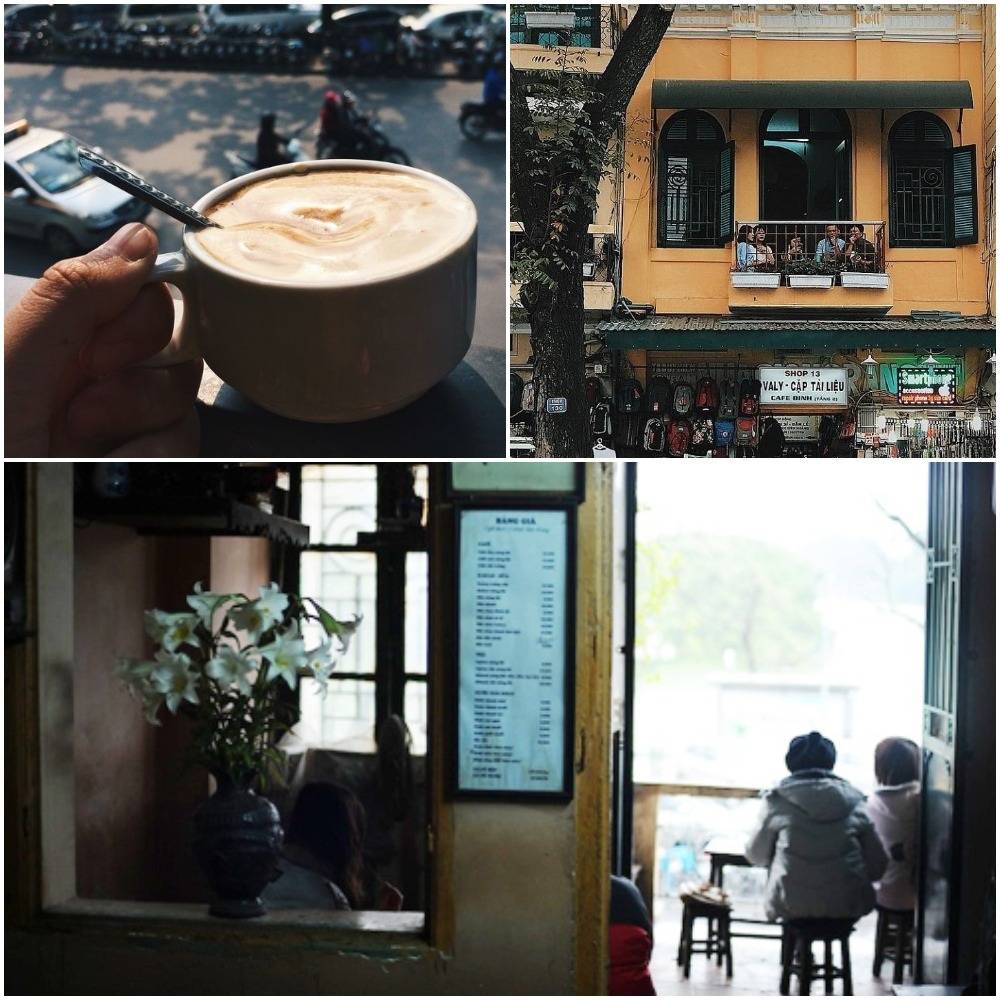
Hot Tips:– If you are fortunate enough, you will have a wonderful view from the balcony seat.
– This cafe is only 100 meters from Thang Long Water Puppet Theater, it’s a great place to wait for your puppet performance.
Ingredients of Vietnamese coffee egg
Ingredients for making Vietnamese coffee egg are things familiar to Vietnamese people, including fresh eggs, sugar, condensed milk, and Robusta coffee.
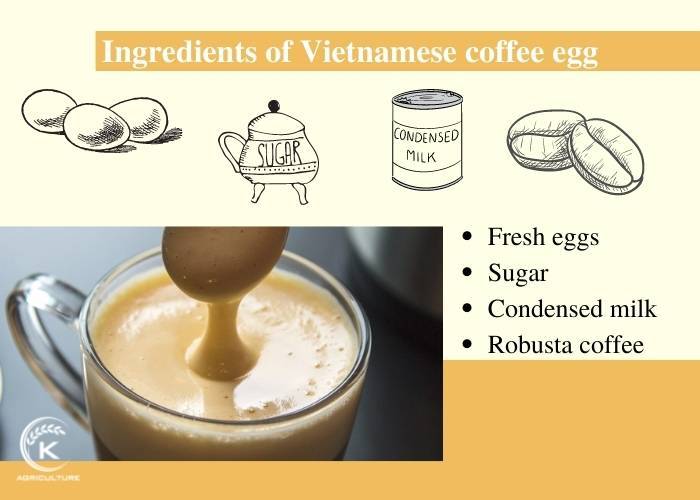
Ingredients of Vietnamese coffee egg
It is necessary to pay special attention to the selection of each ingredient to ensure the quality of the coffee cup. The perfection in each ingredient contributes to the perfection of each cup of coffee.
- The secret to a perfect cup of Vietnamese coffee egg is that the eggs must be fresh, absolutely do not use industrial eggs so that when beaten, then they do not cause a fishy smell.
- Another important note when making Vietnamese coffee egg is the fineness of the coffee, the source of coffee must be pure coffee, clean coffee without impurities, finely ground, so the cup The coffee will have the full aroma and taste, helping to make the egg coffee cup the most delicious.
- The ratio of ingredients between coffee and eggs is an important factor to be able to make a delicious cup of Vietnamese coffee egg. A standard cup of egg coffee is neither too sweet nor too bitter, the taste is greasy, delicious, is a typical blend between the aroma of coffee and fresh eggs that makes a difference and is attractive to people.
